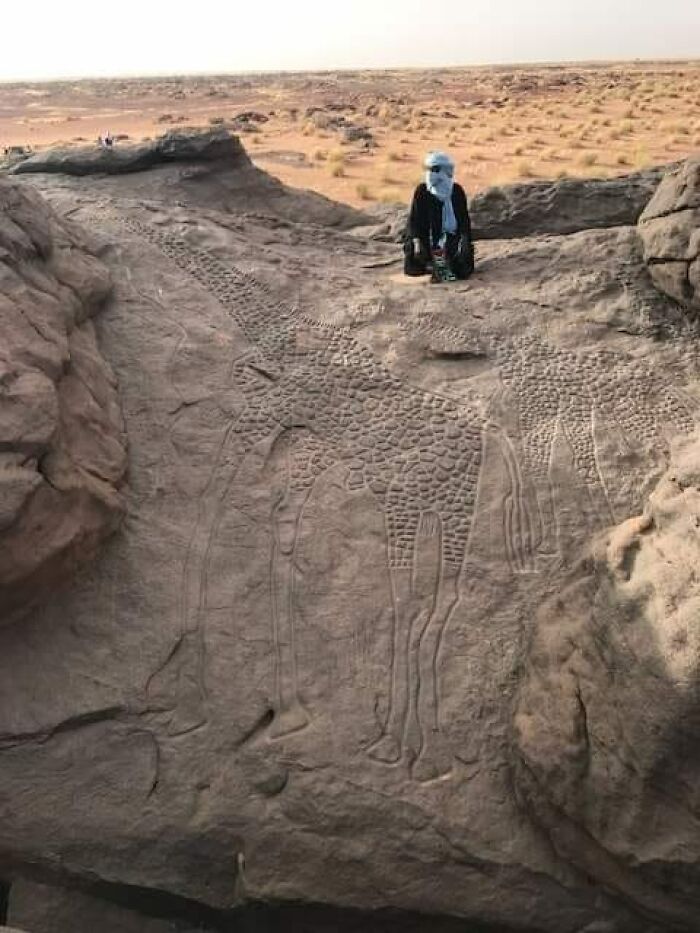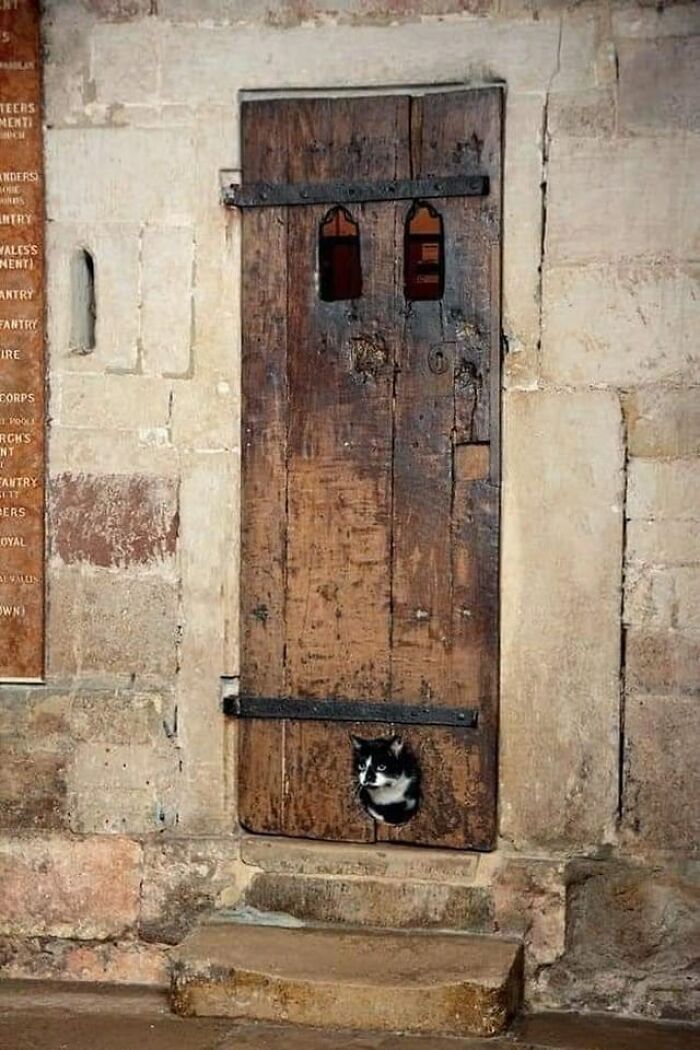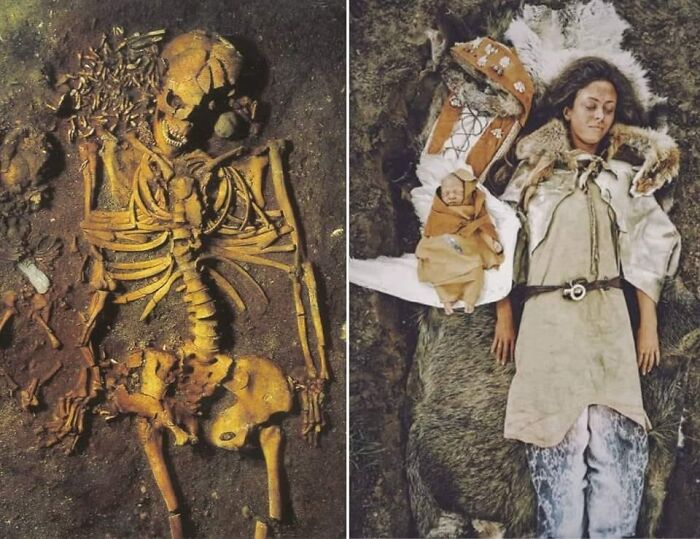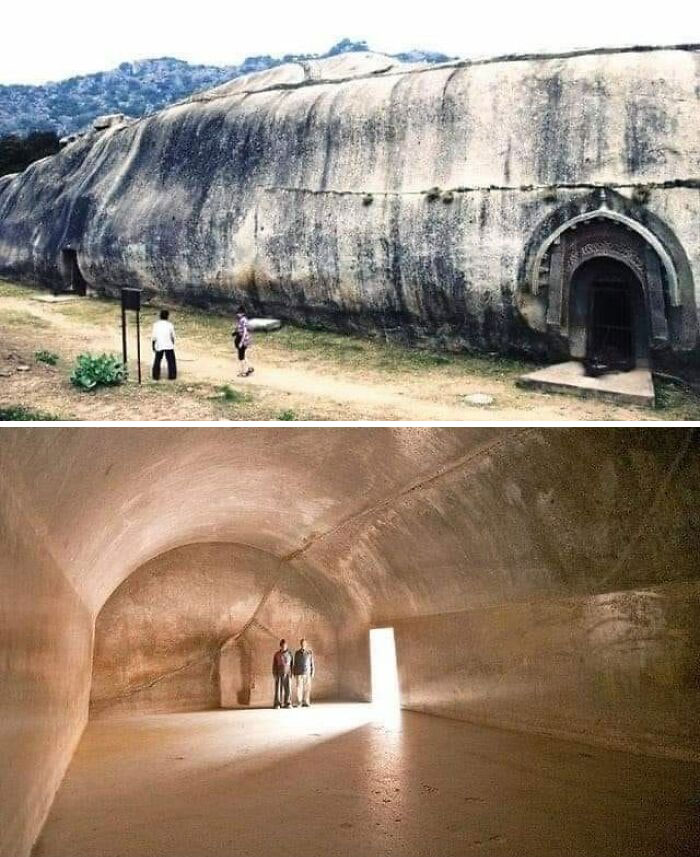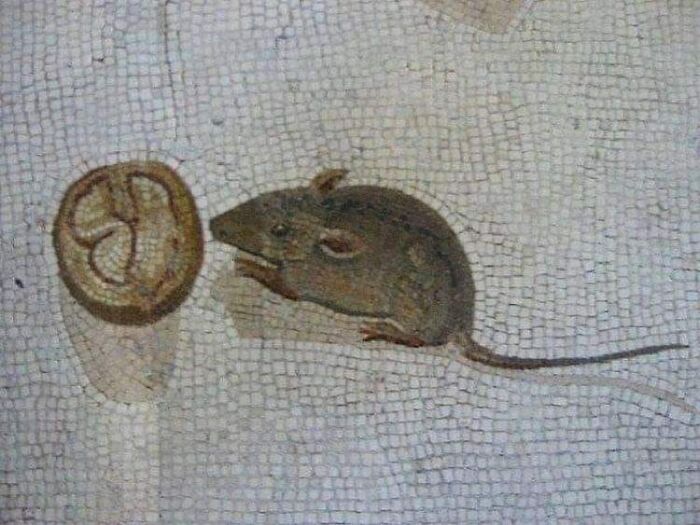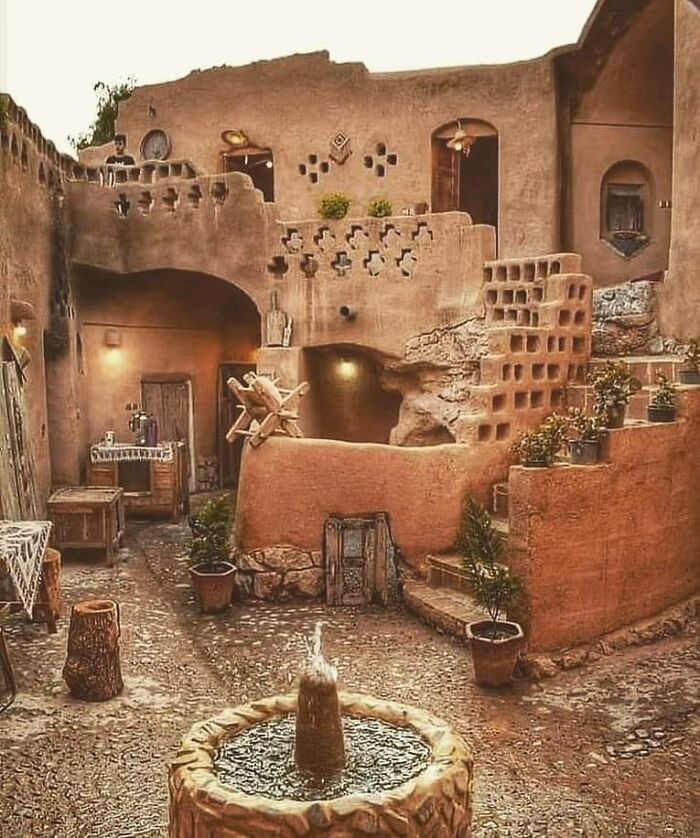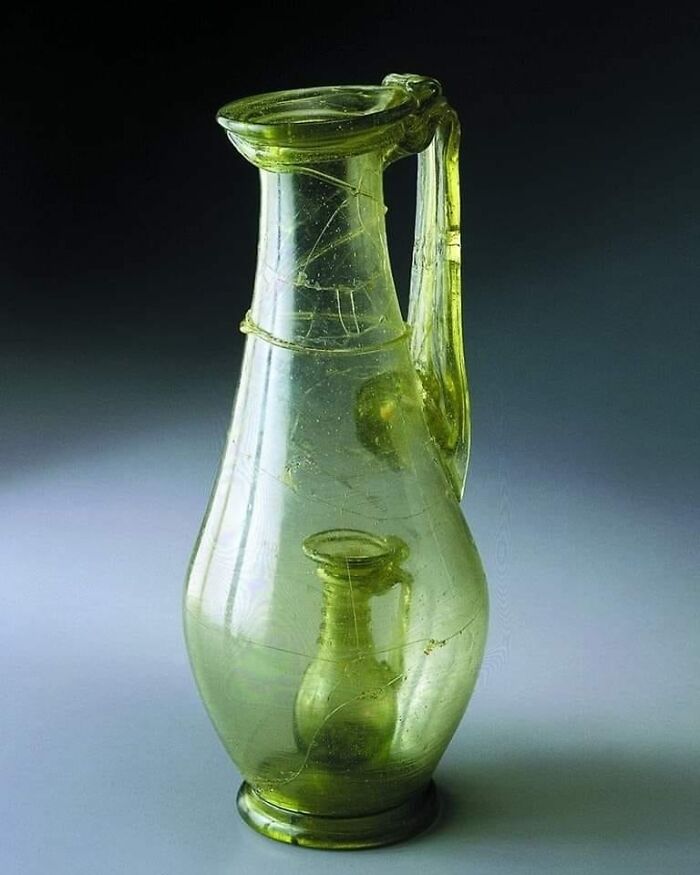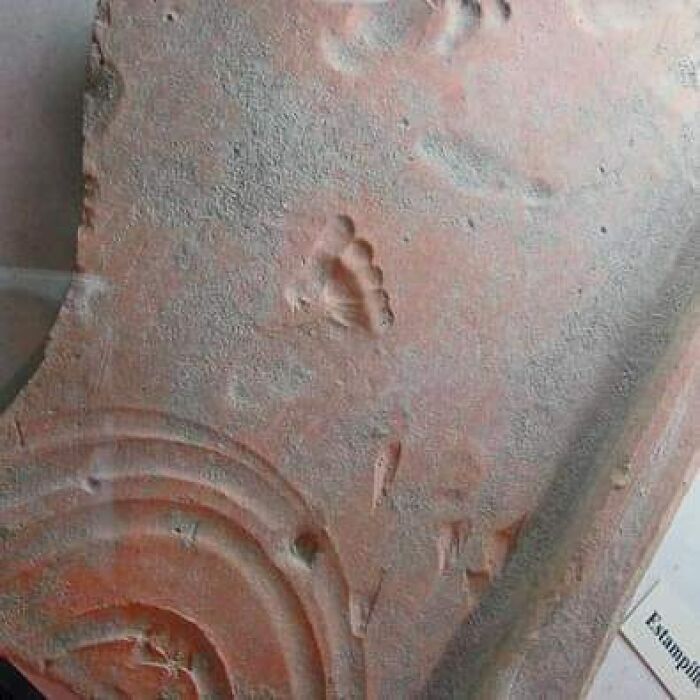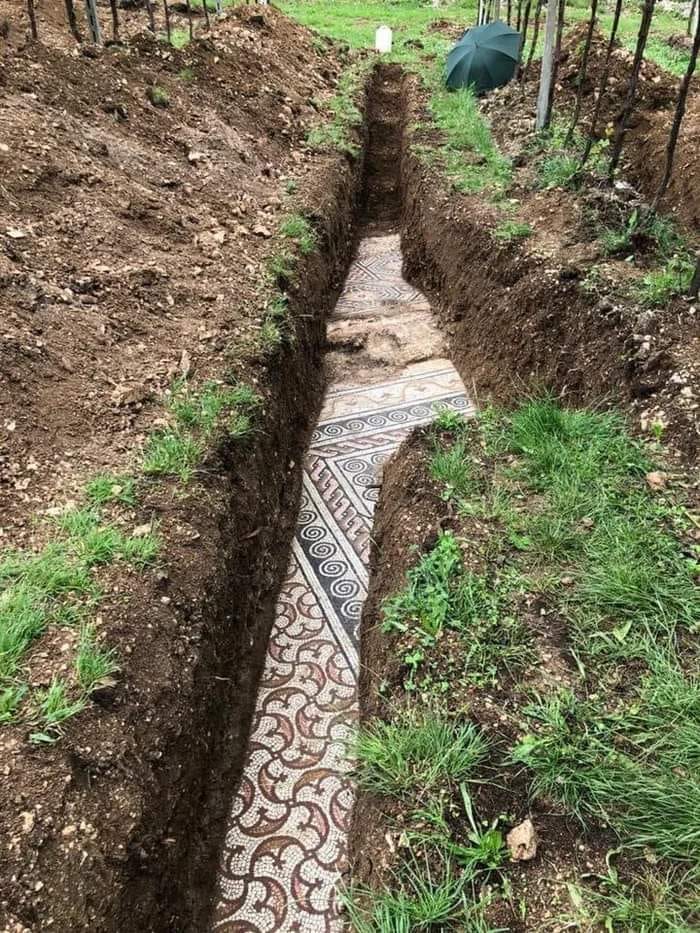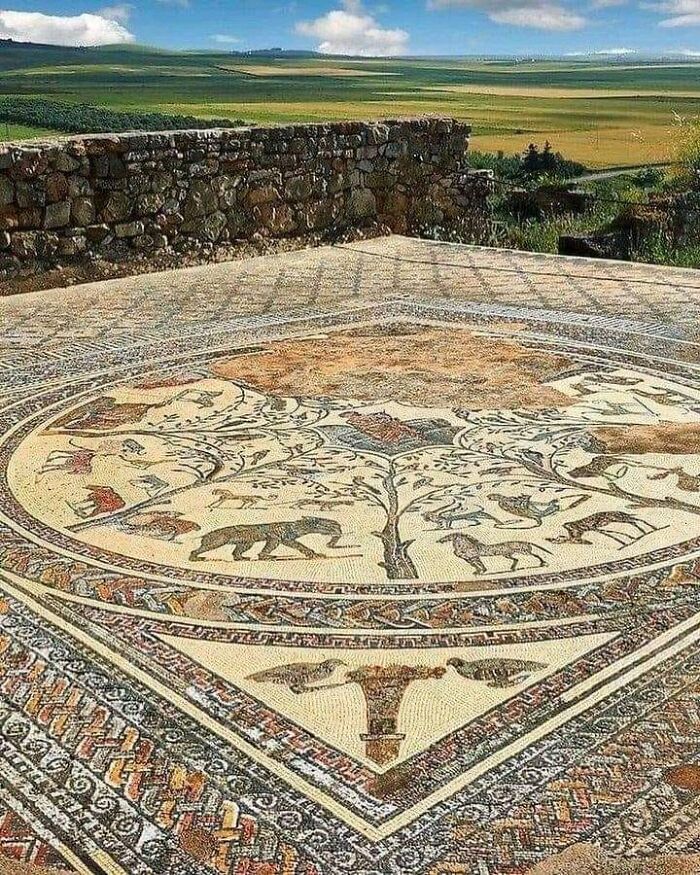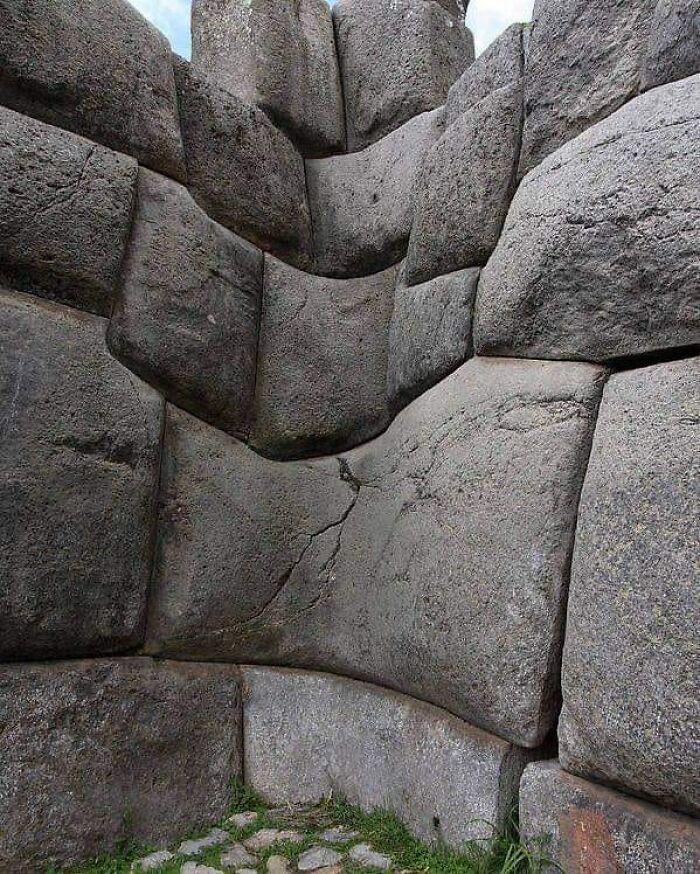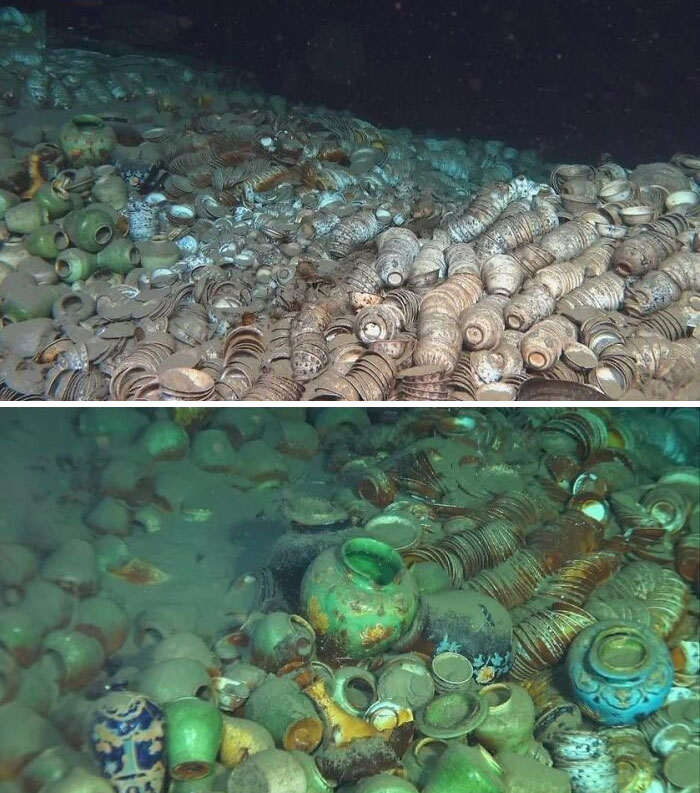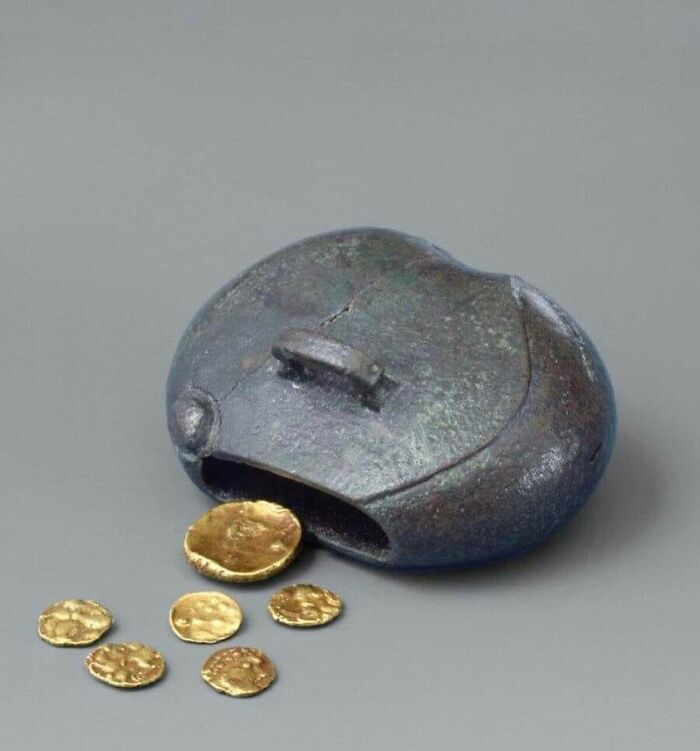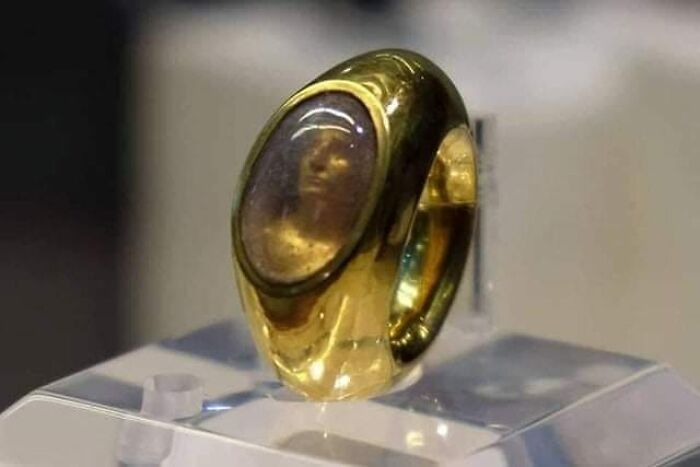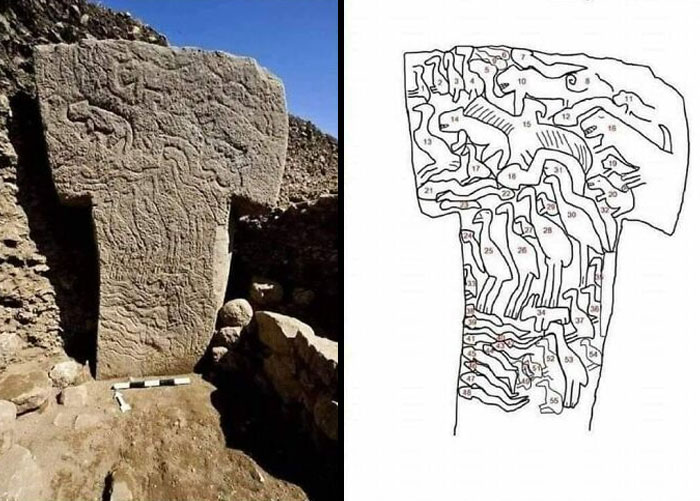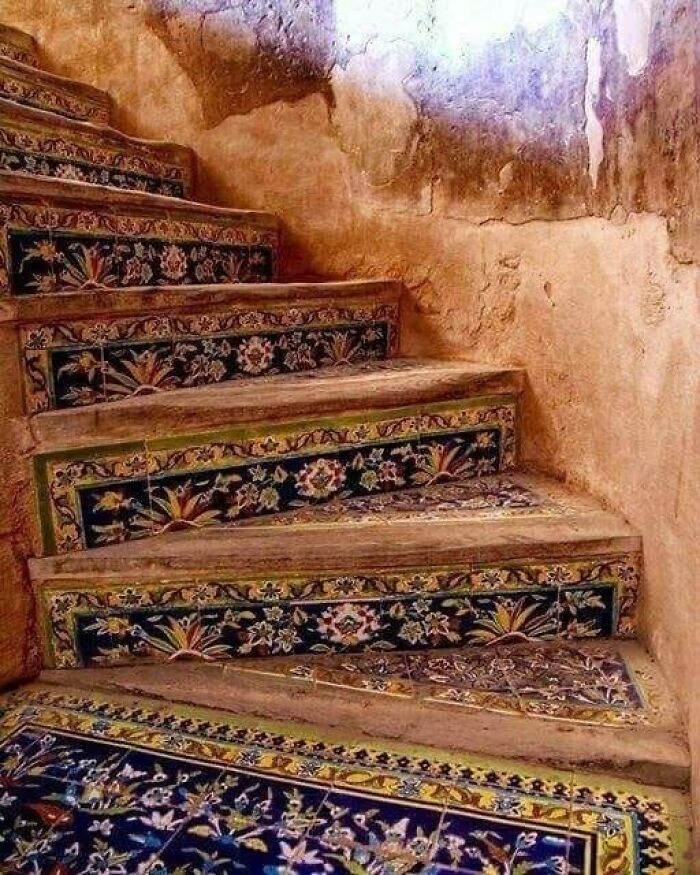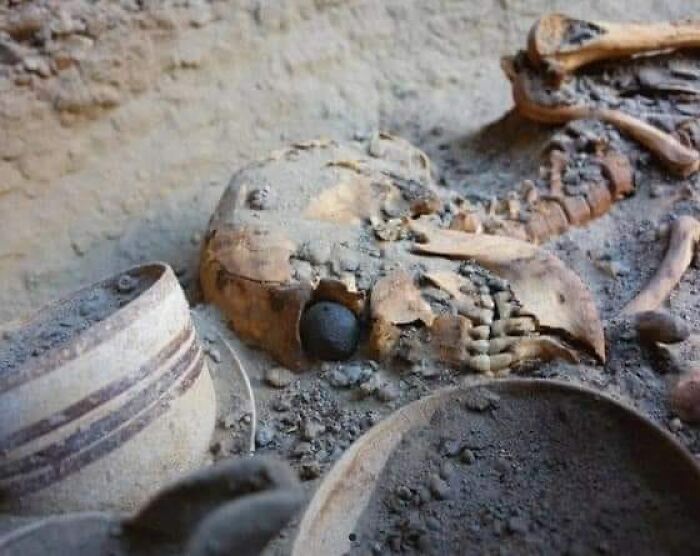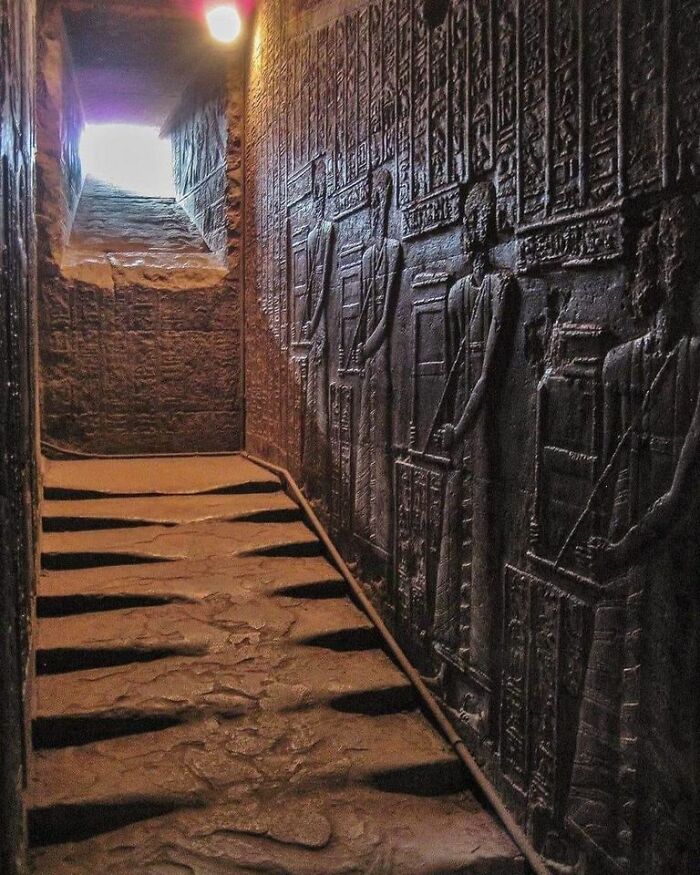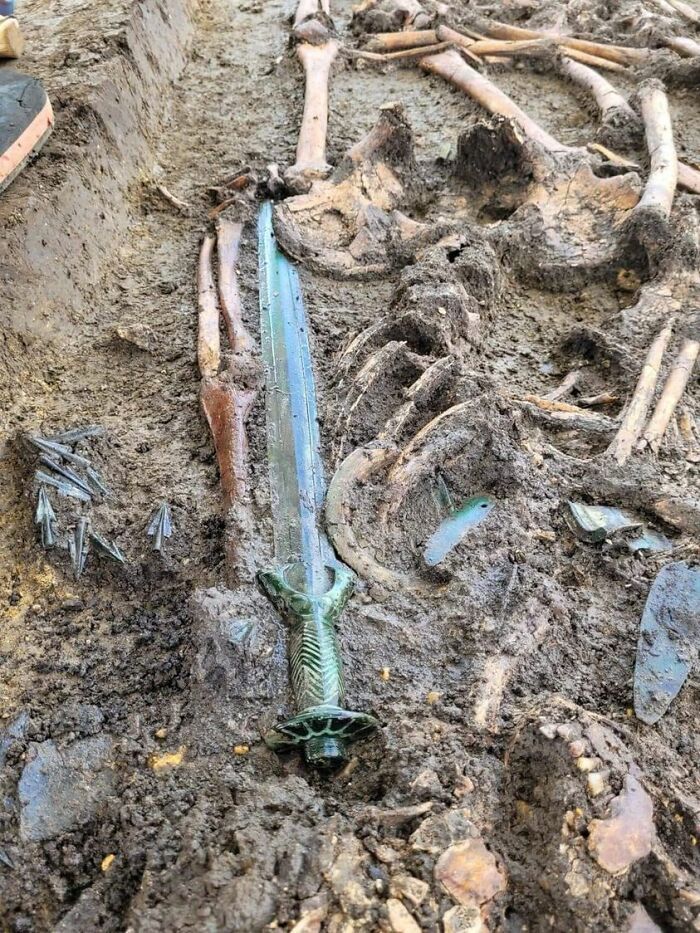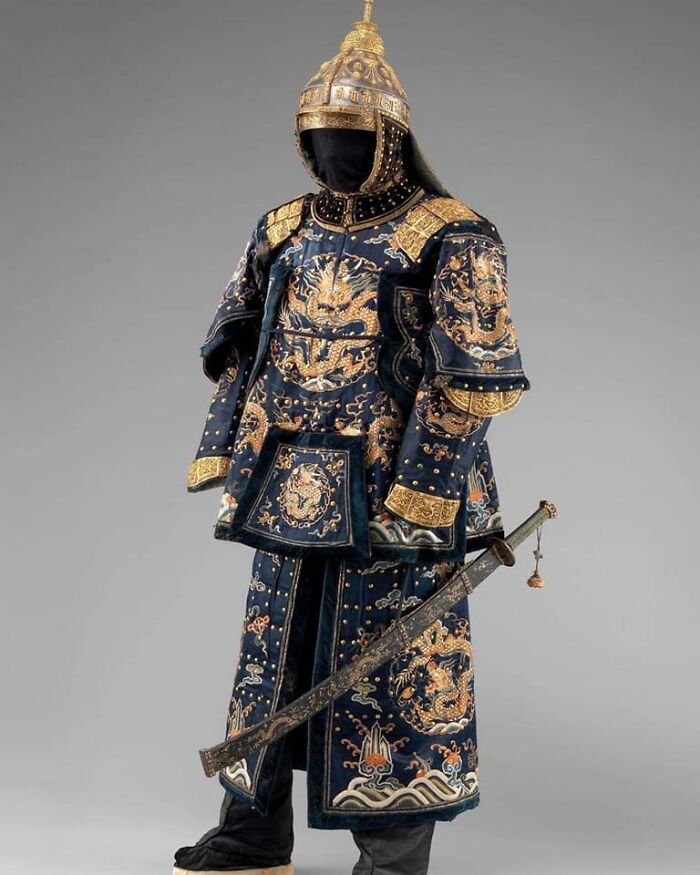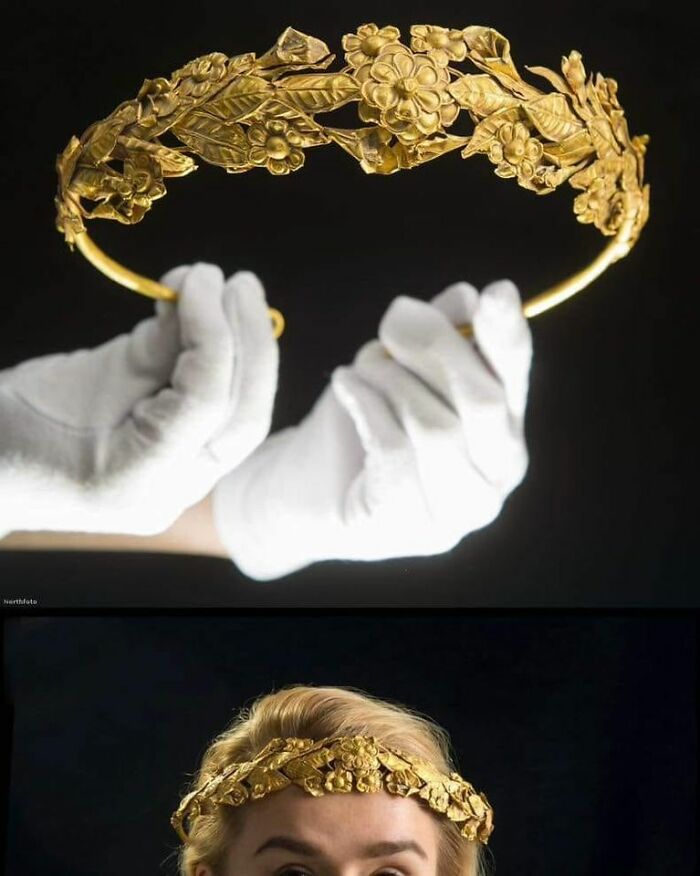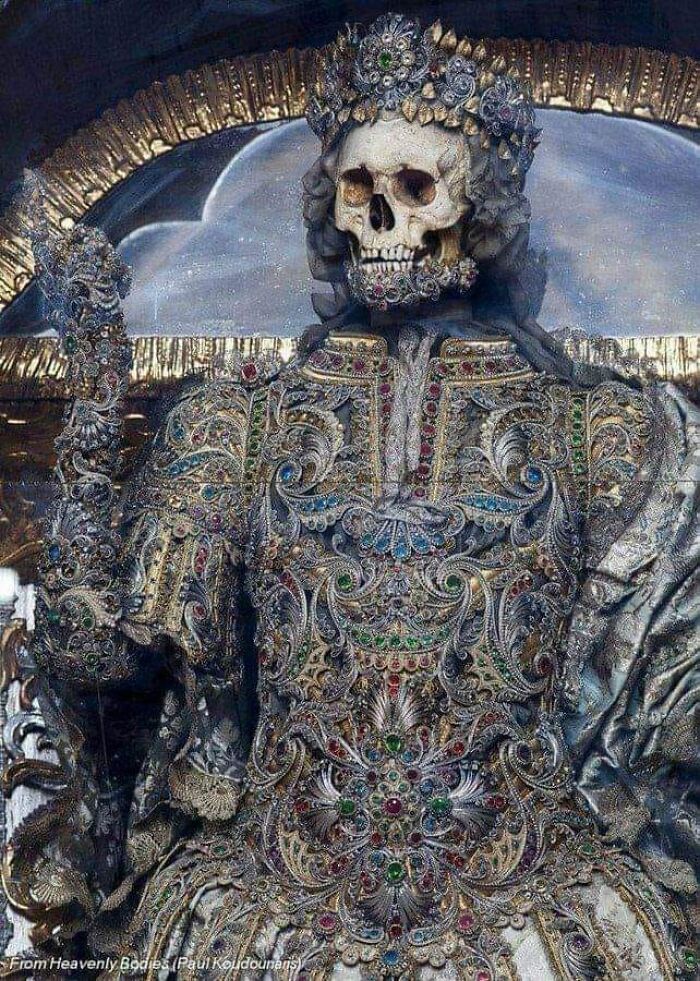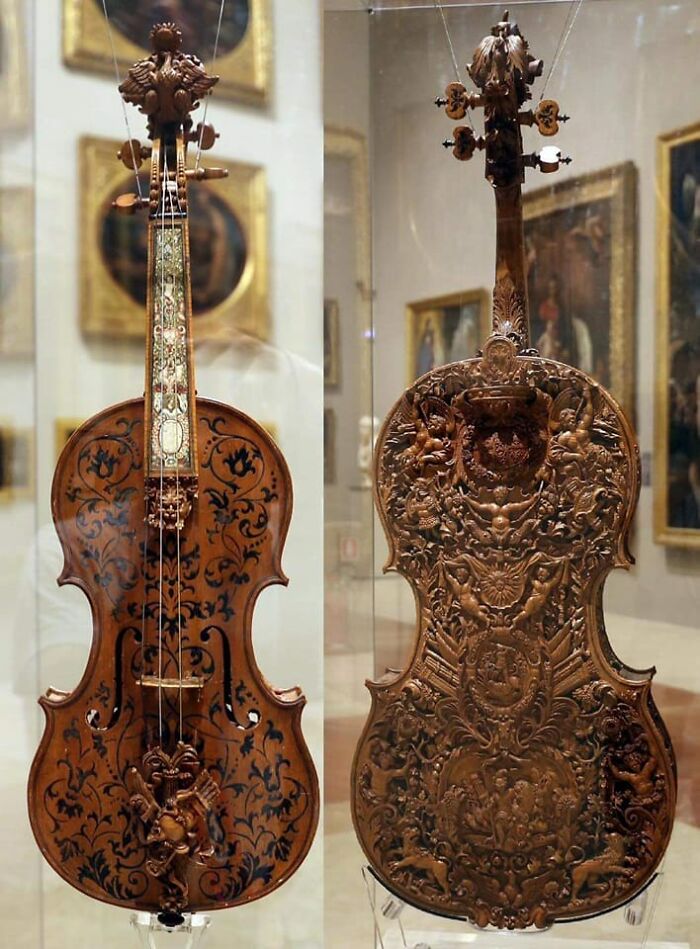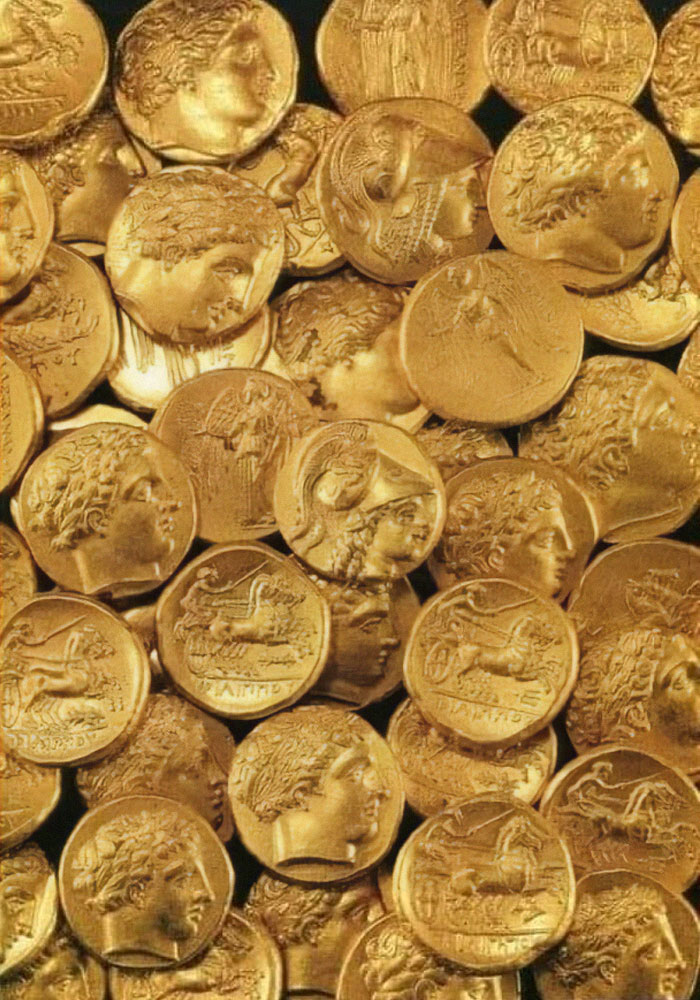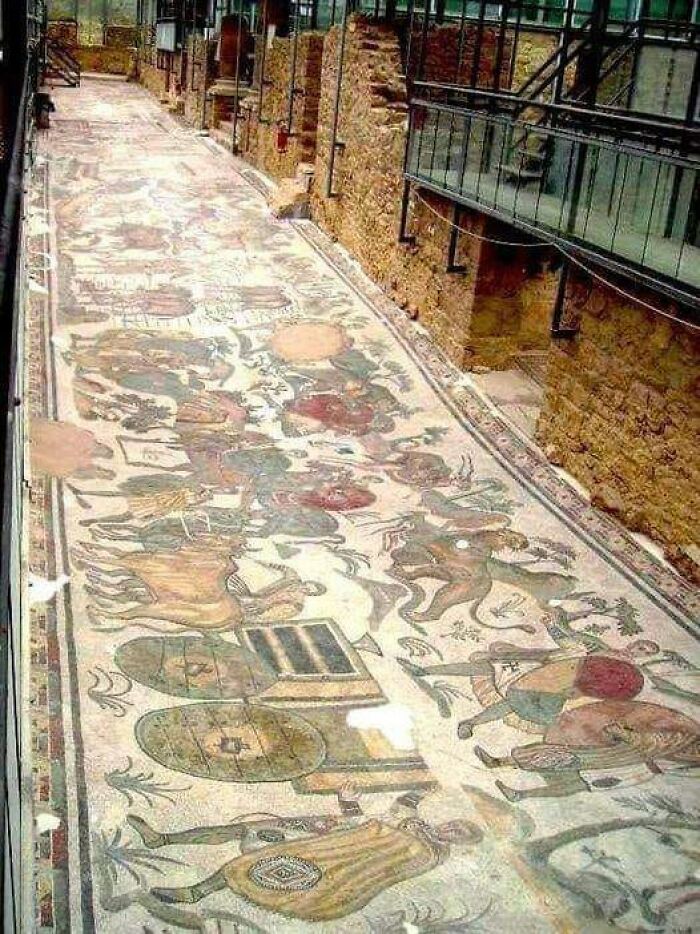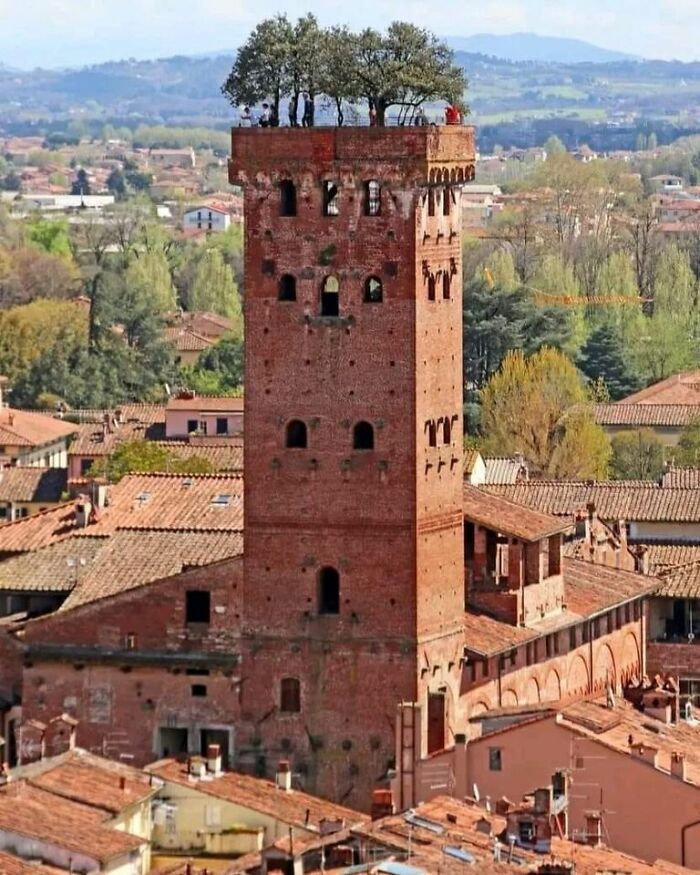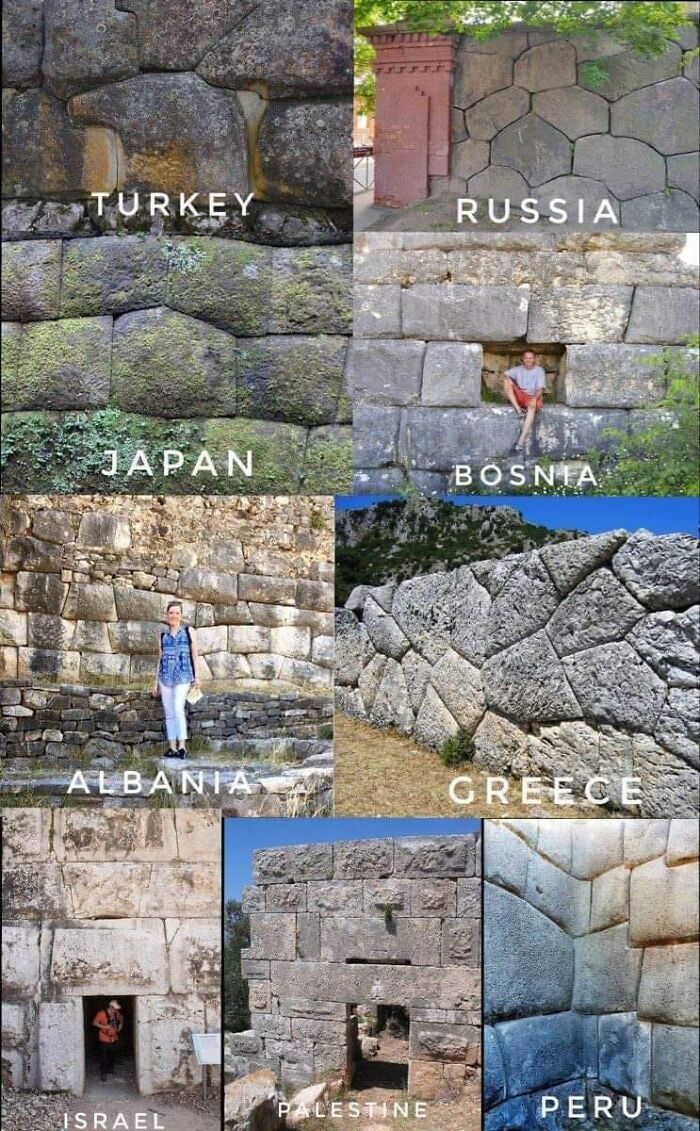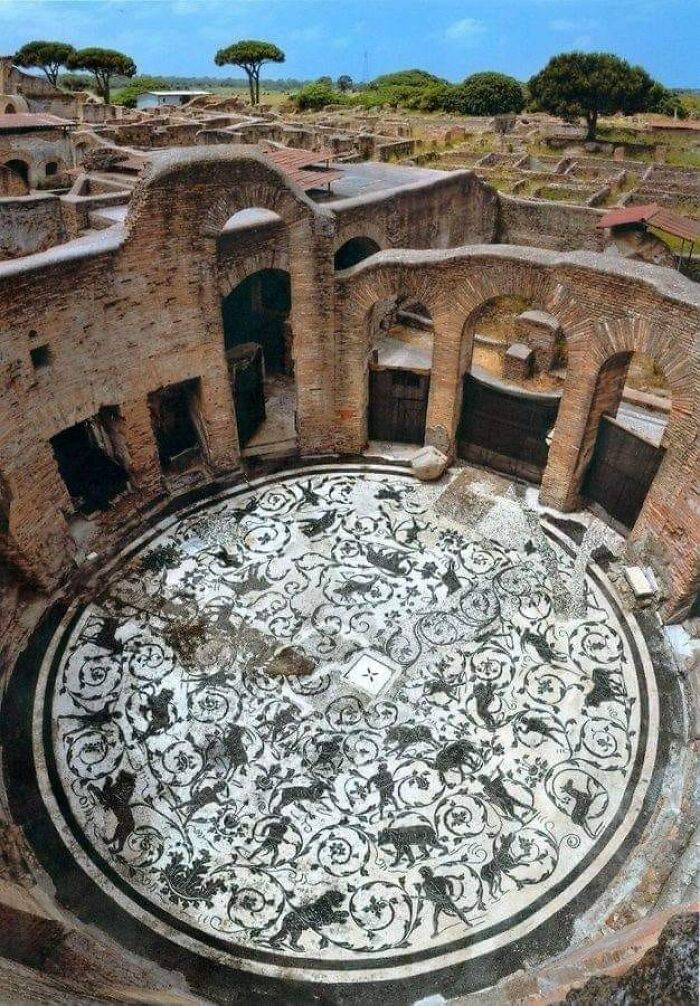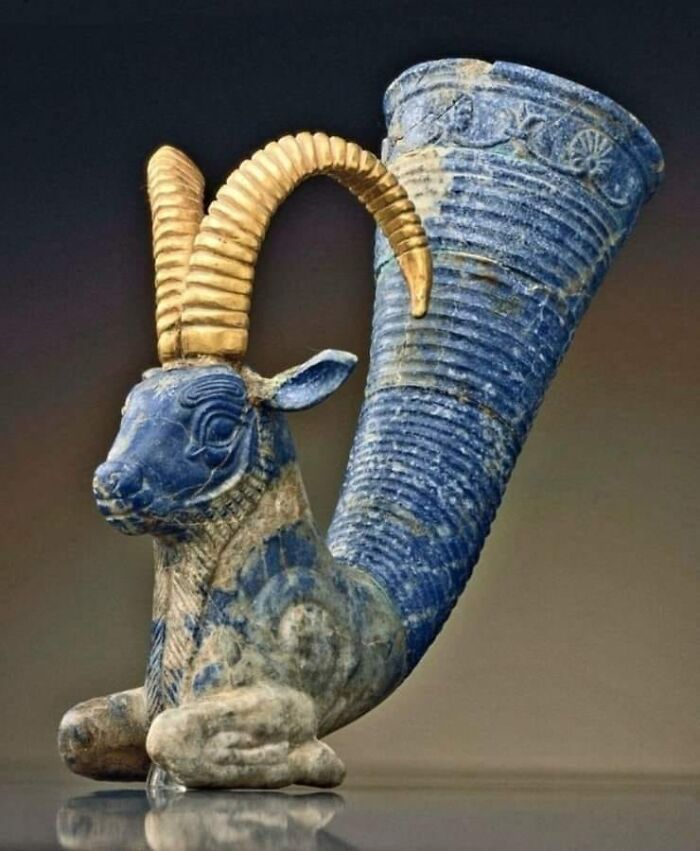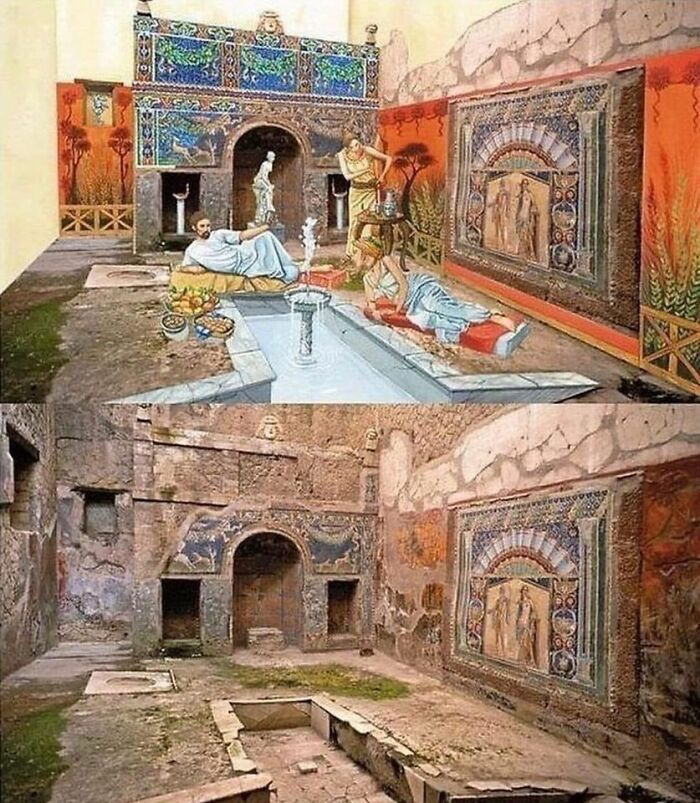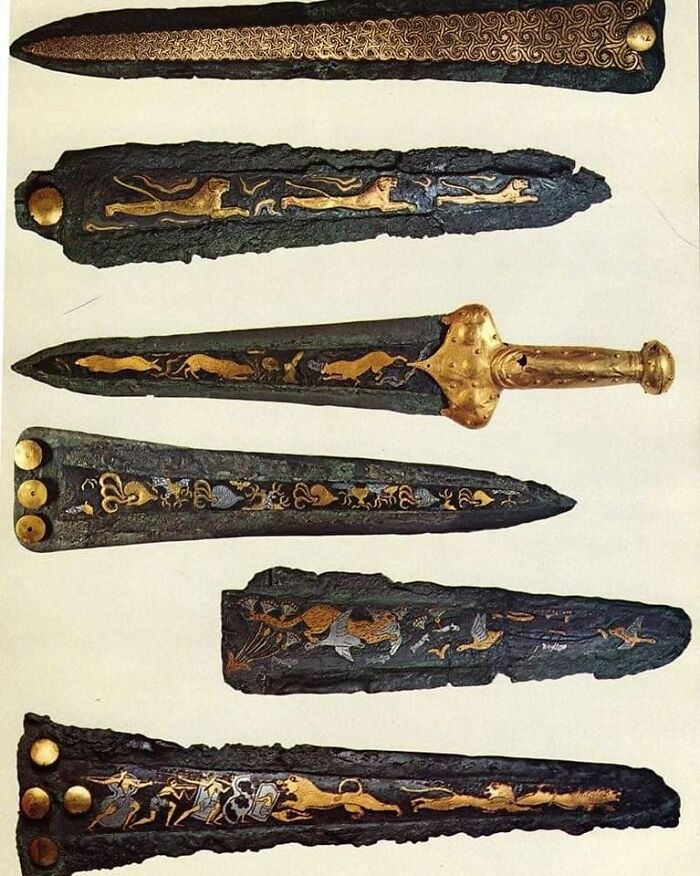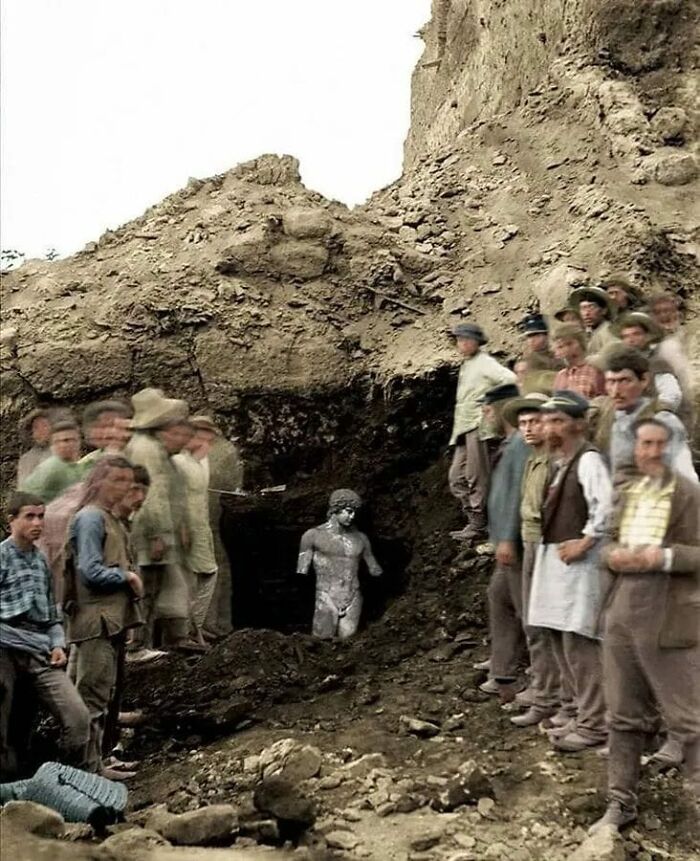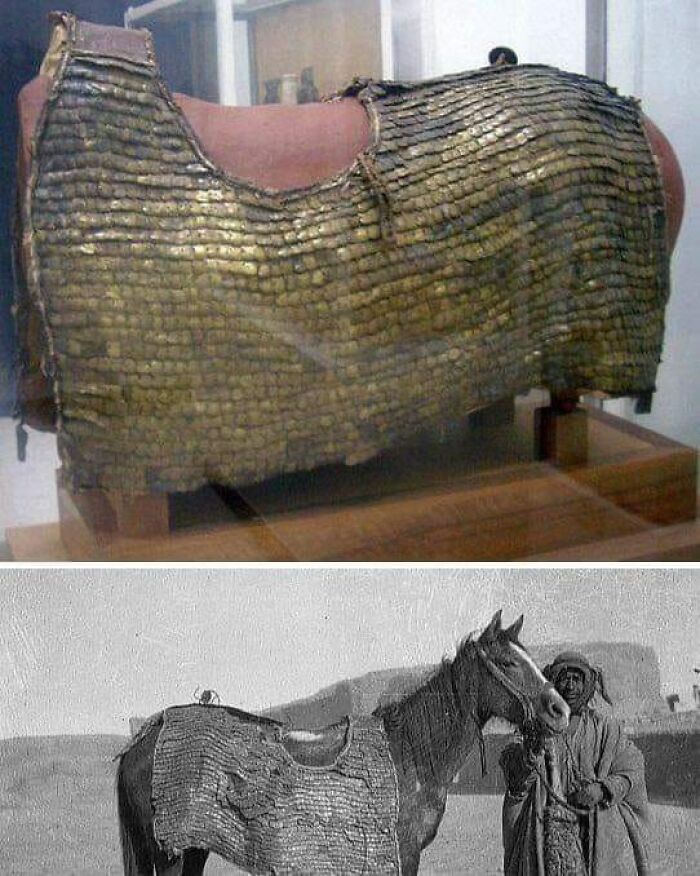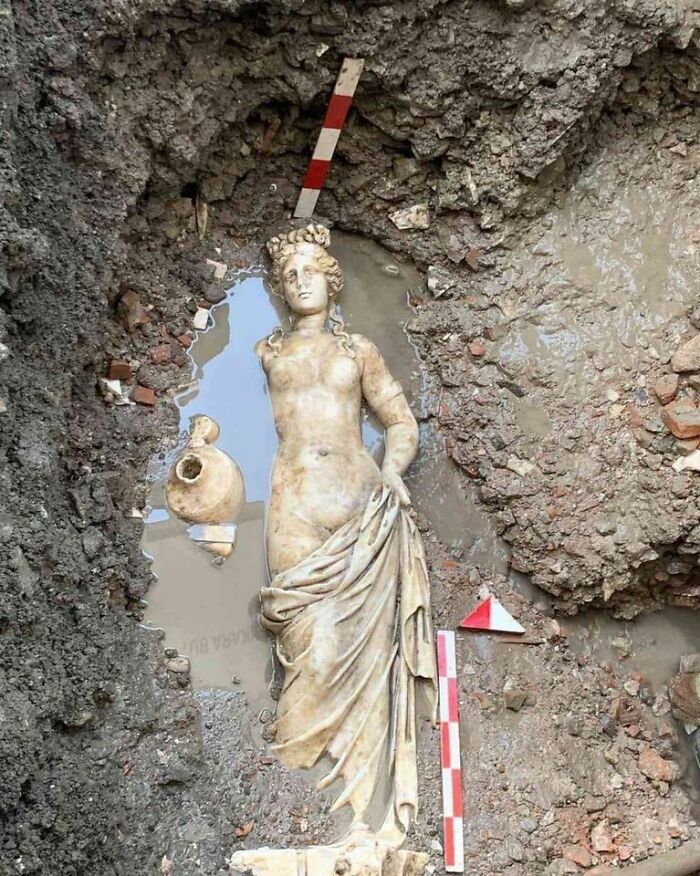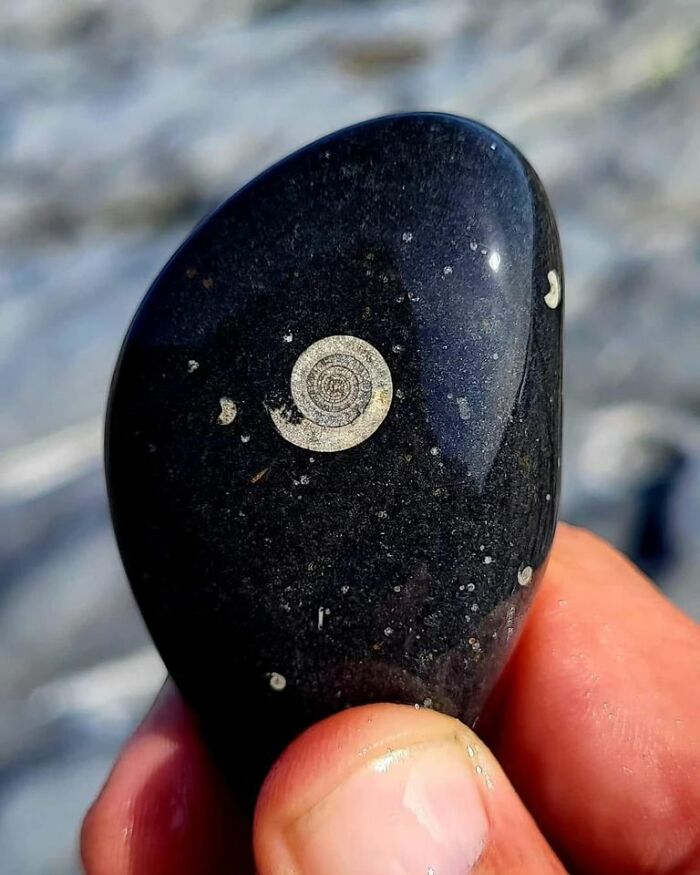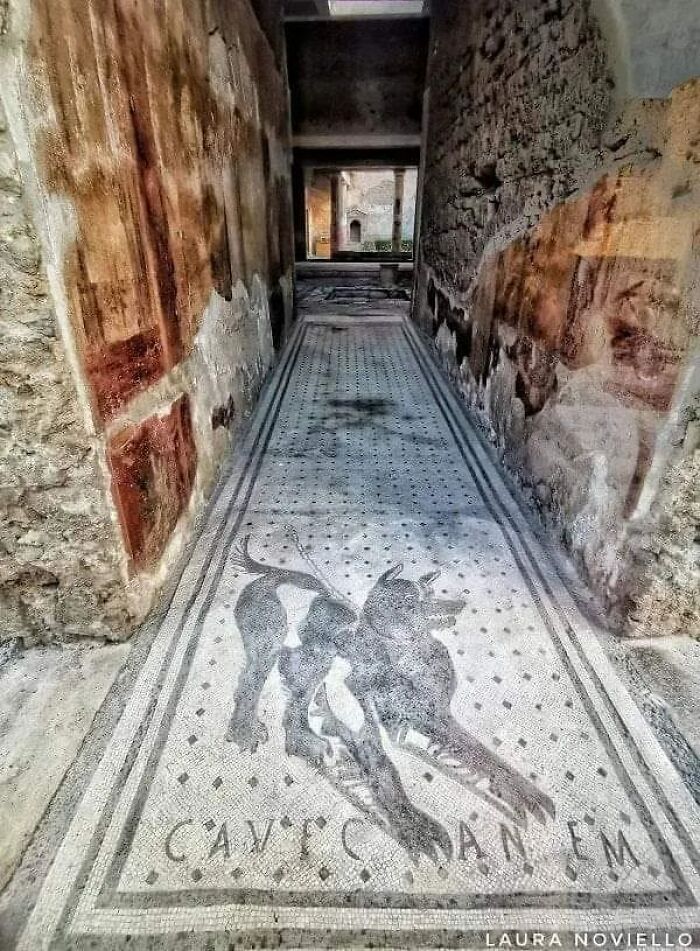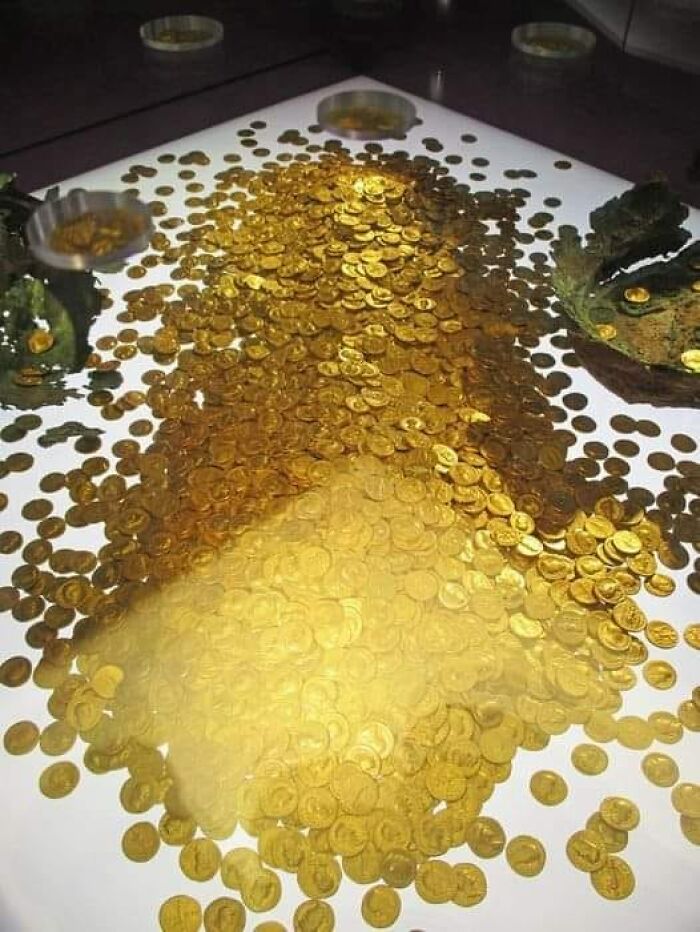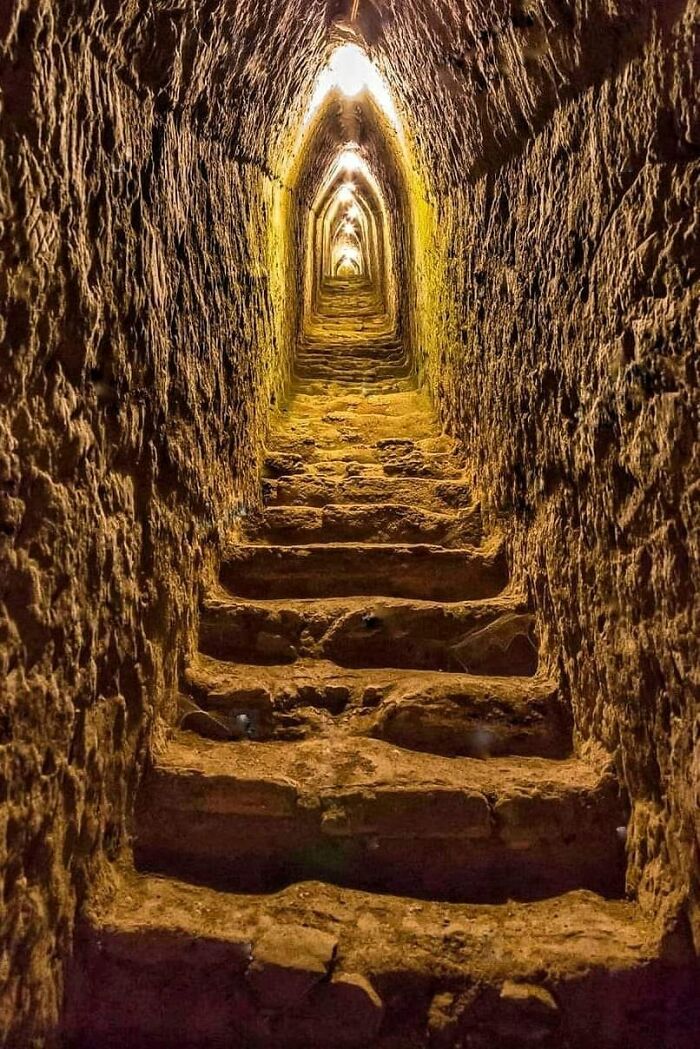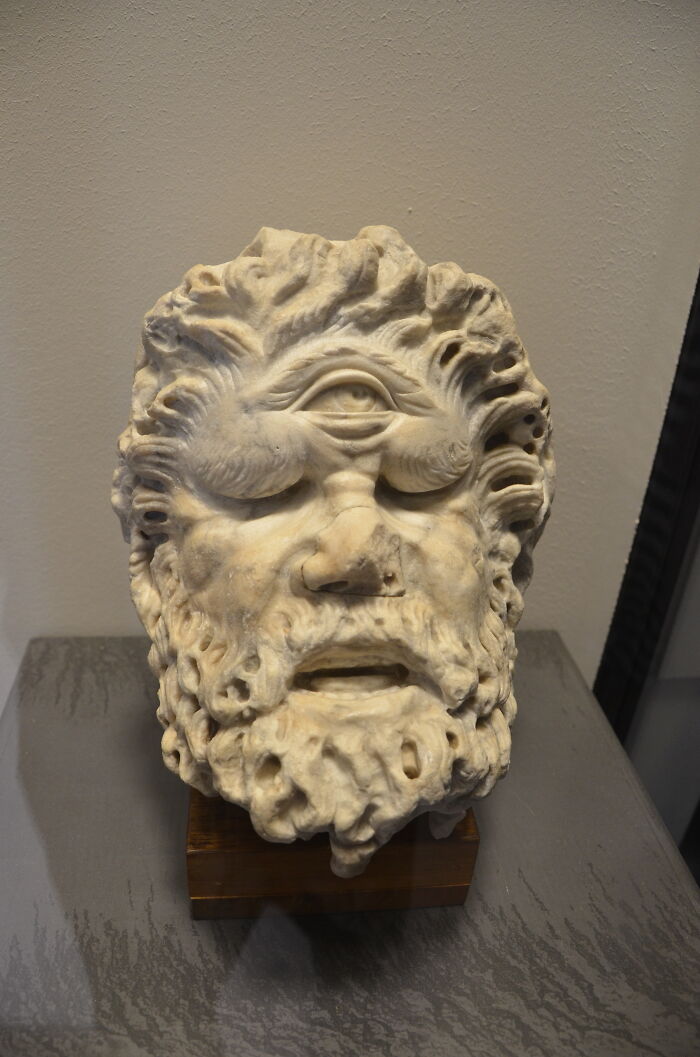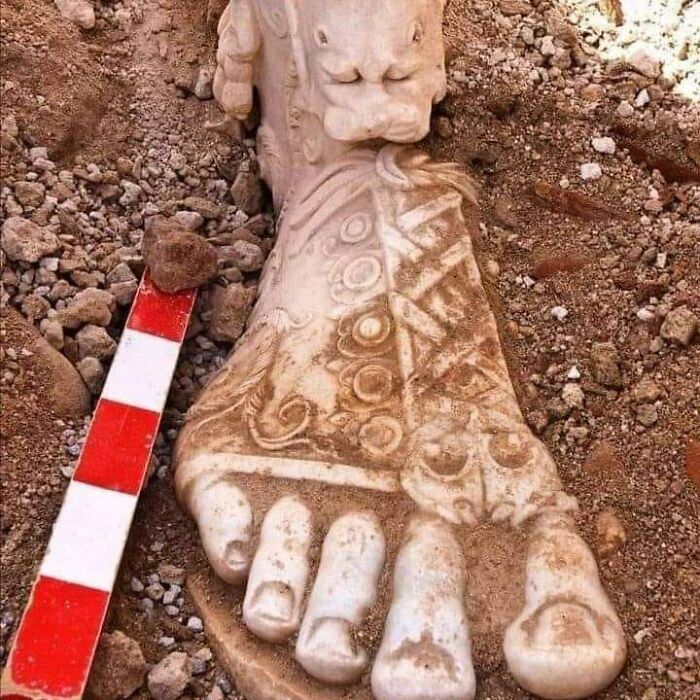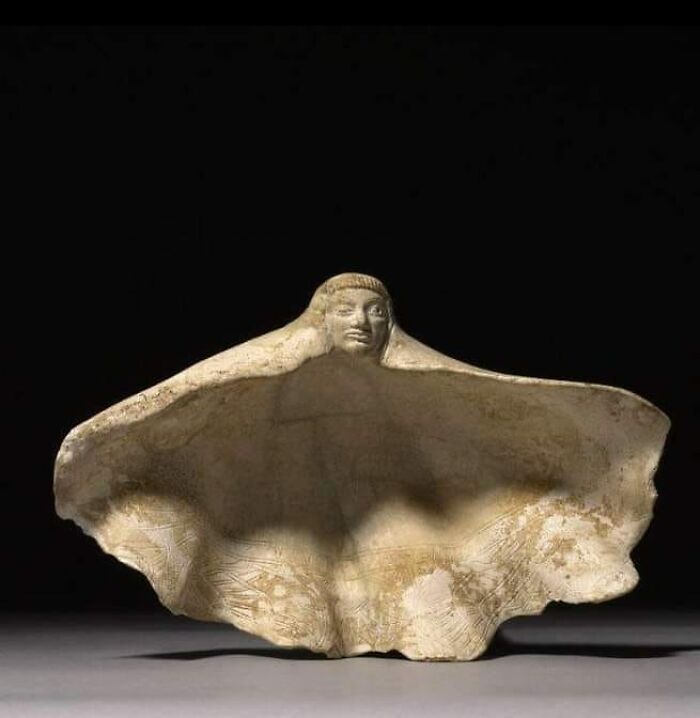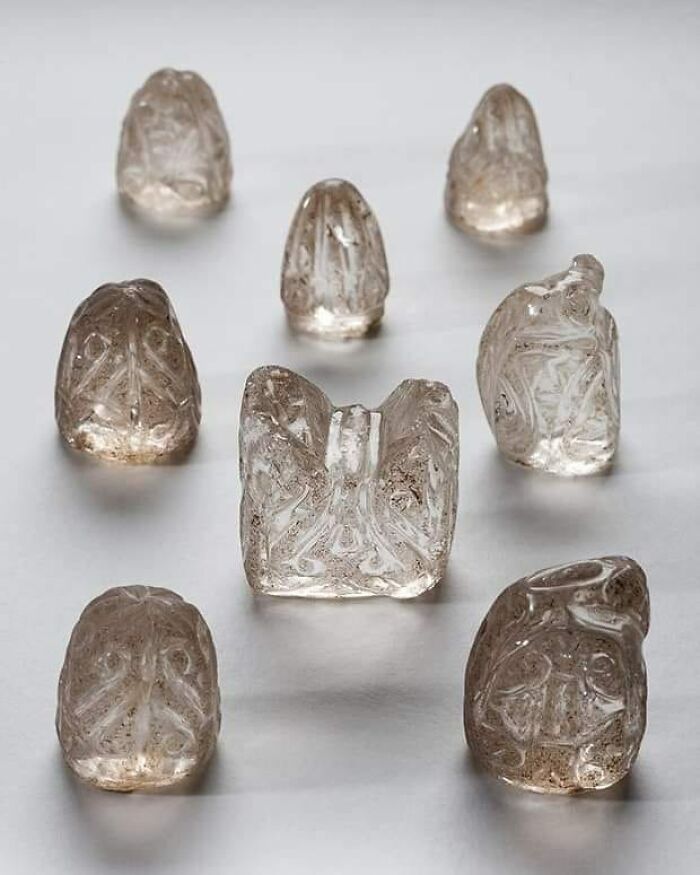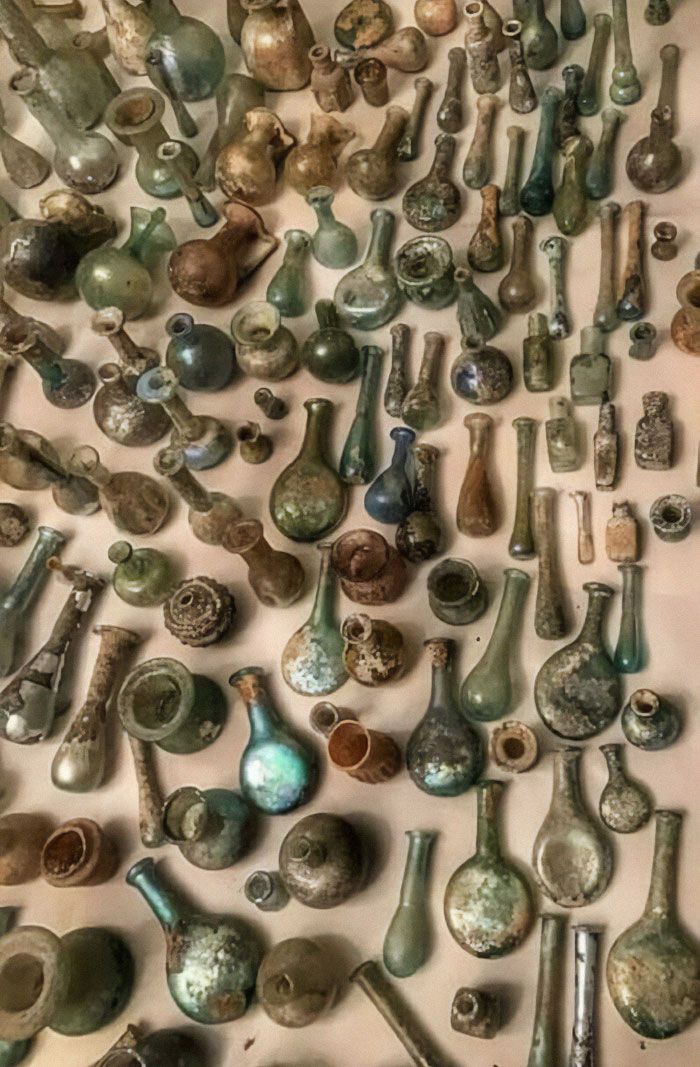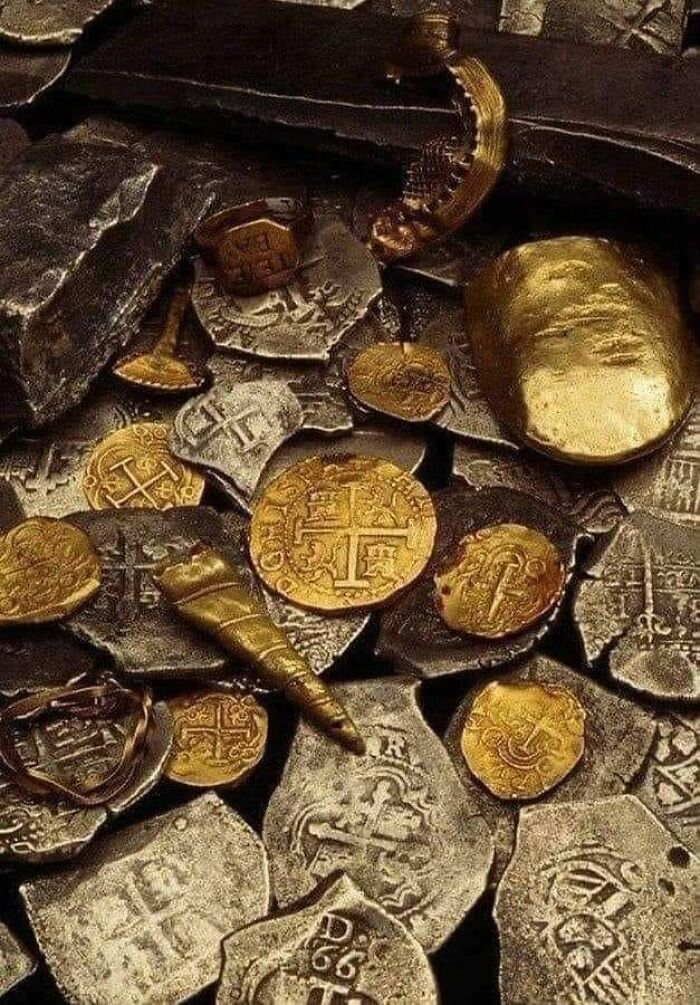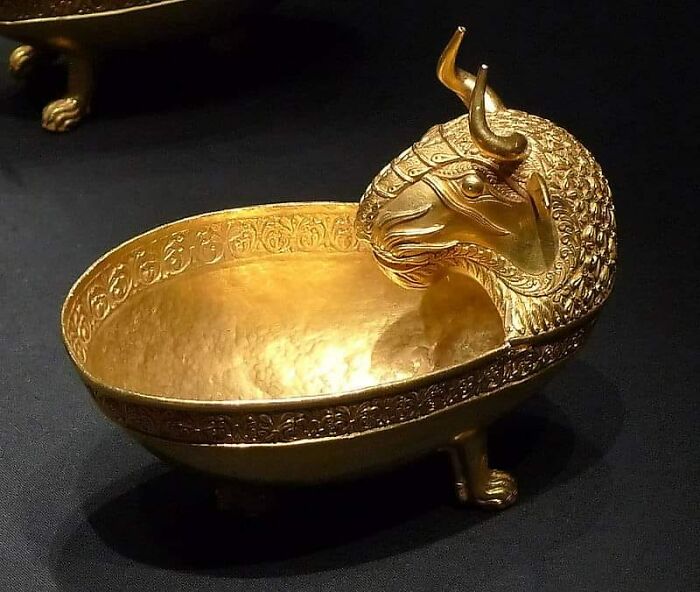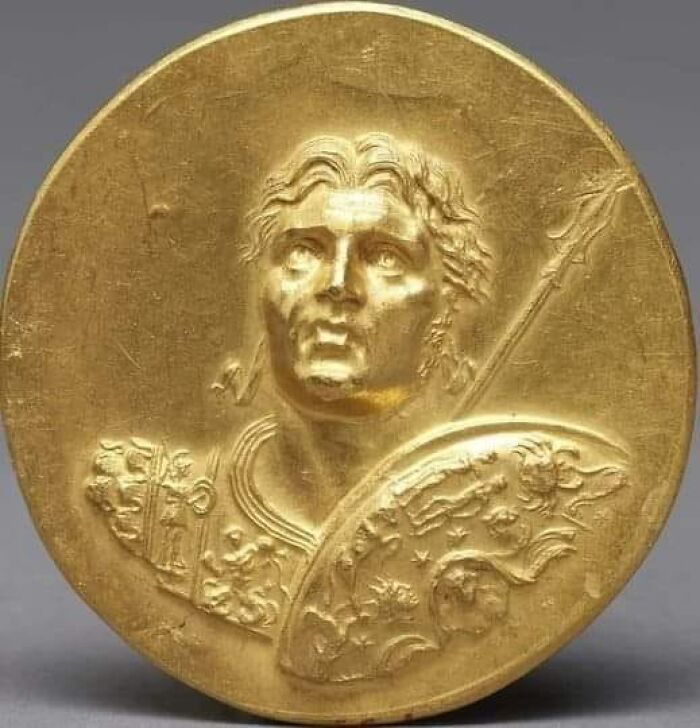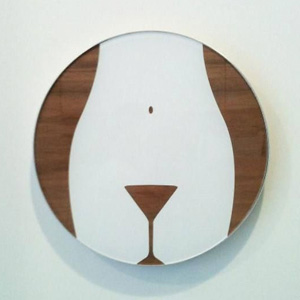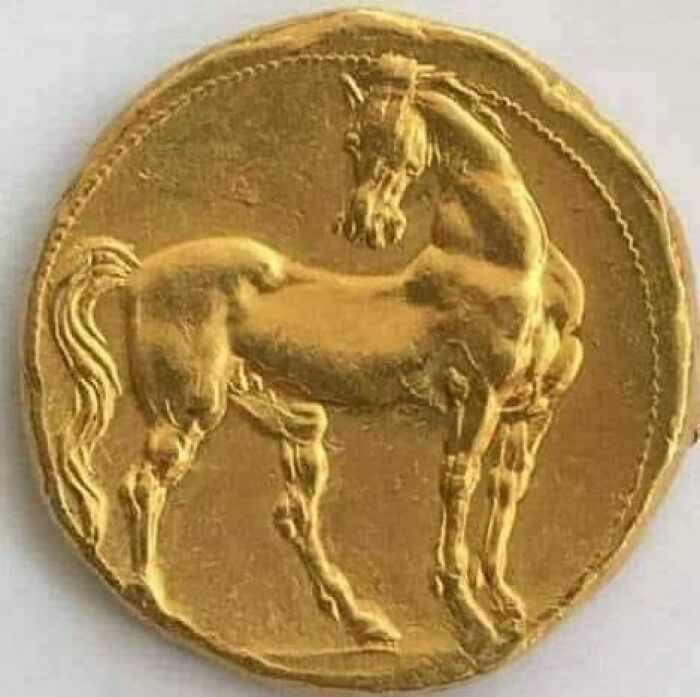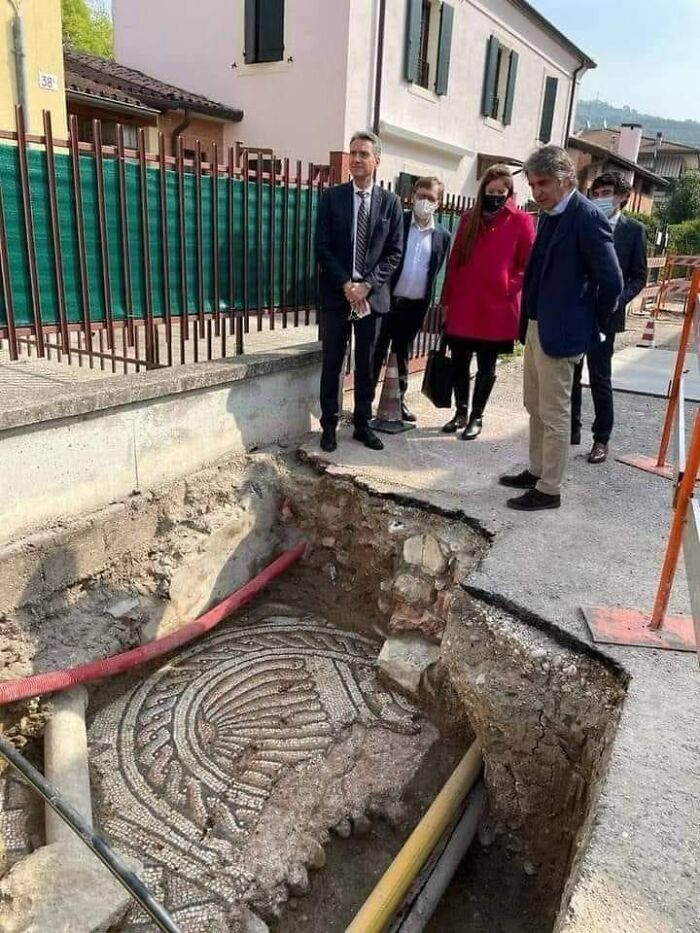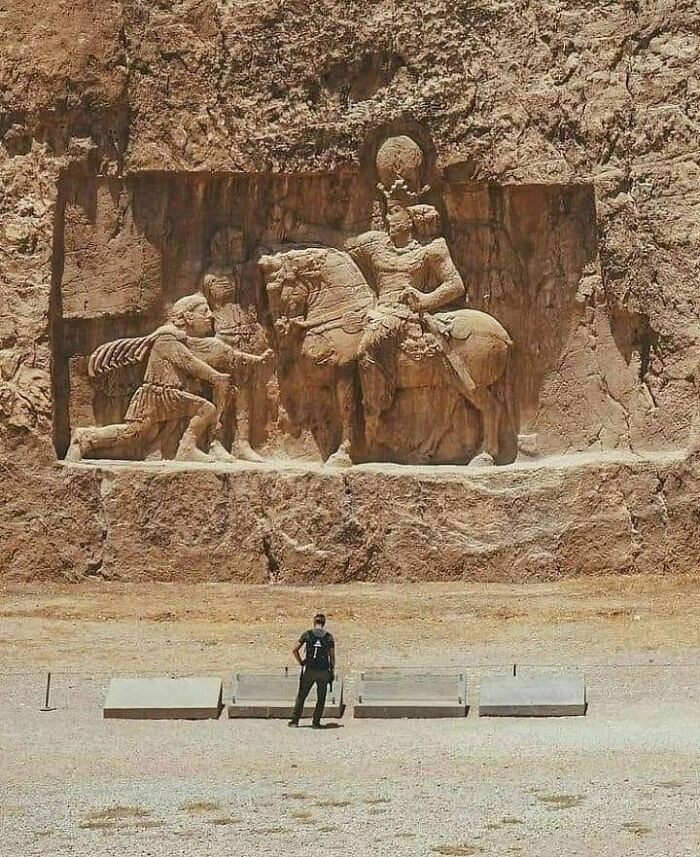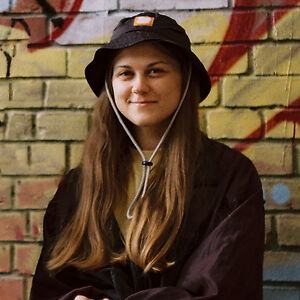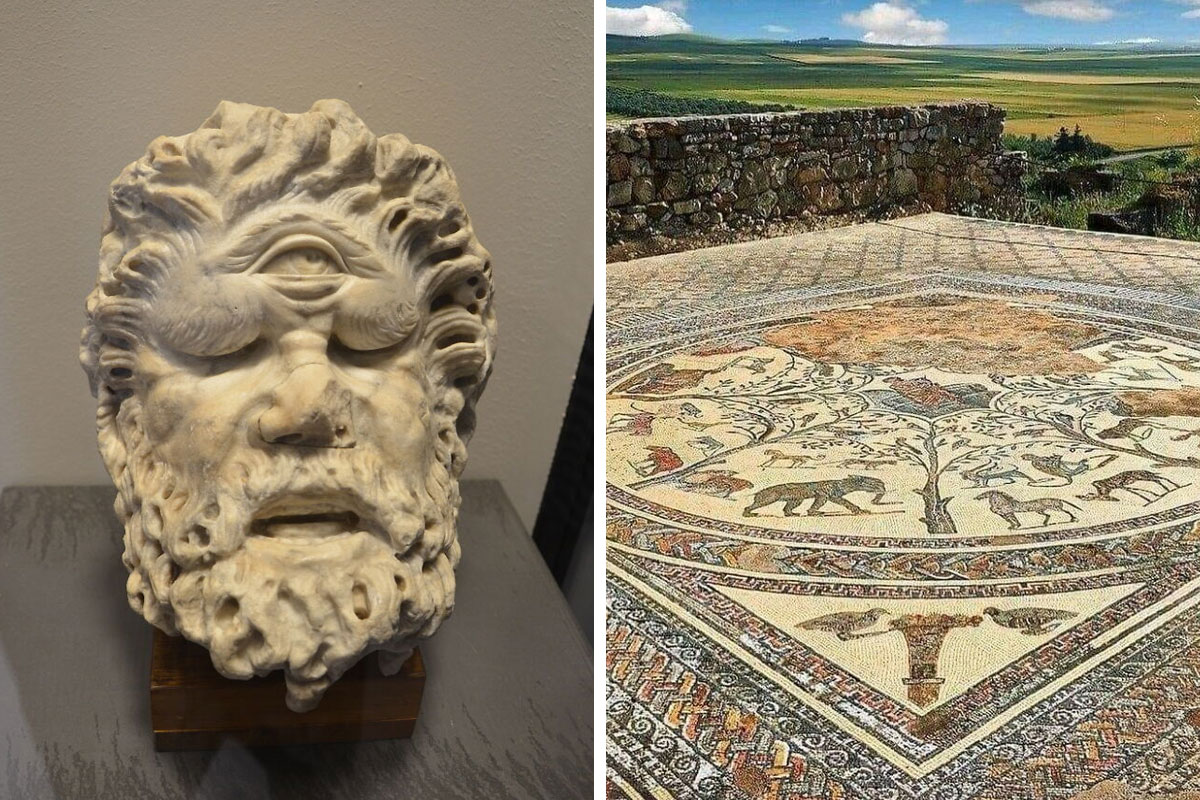
50 Fascinating Archeological Finds We Are Lucky Enough To Witness, As Shared On This FB Group
Archeology is a fascinating subject. It has helped us understand the history of many cultures around the globe. It’s the reason why we know our origins and have a good understanding of how our world has progressed.
On top of all that, it also helps us to connect to people from the past. When we look at the work they’ve done, the craftsmanship of the objects, the beauty of portraits and statues, we feel kinship and understanding. It allows us to relate to them on a new level. The pictures of artifacts and features in the list below do this perfectly. Scroll down to admire these wonderful findings.
This post may include affiliate links.
10,000 Year-Old Giraffe Engravings In The Sahara Desert
Archeology itself involves a lot of very intentional work. It’s planned, meticulous, and organized. However, there have been quite a few significant findings in history that were made completely by accident.
One such lucky accident was the discovery of the Terracotta Army in Lintong county, China. It was discovered by a group of farmers in 1974 when the area was facing an extended drought and the crops were suffering.
This 14th Century Door At Exeter Cathedral, UK, Is Thought To Be The Oldest Existing Cat Flap
A cat was paid a penny each week, to keep down the rats and mice in the north tower, and a cat flap was cut into the door below the astronomical clock to allow the cat to carry out its duties.
Records of payments were entered in the Cathedral archives from 1305 to 1467, the penny a week being enough to buy food to supplement a heavy diet of rodents.
I thought the cat flap was invented by sir Isaac Newton because of his cat that kept bothering him to go in and out of the house (like a normal cat!) while he wanted to work.
A 7000-6000 Year Old Burial Of A Young Woman (Aged Around 20 At The Time Of Her Death) And Her Newborn Baby From Vedbaek, Denmark
By her head, 200 red deer teeth and a bone hairpin, as well as red deer hooves which came from a skin that was wrapped around her. The child is cradled in the wing of a swan with 2 flint knives at its hip, suggesting the baby was a boy. It’s thought the pair died together in childbirth.
One of the farmers, Yang Zhifa, together with his five brothers Yang Wenhai, Yang Yanxin, Yang Quanyi, Yang Peiyan and Yang Xinam and the neighbor Wang Puzhi decided that they had to do something about it. So, they decided to dig a well. After all, the area was known for its underground springs.
They chose a small wooded area in the south of their village and started digging. Five days and 164 feet later, Zhifa was surprised to find a terracotta head staring at him from the bottom of the well. He immediately contacted the authorities who rushed archeologists to the site.
This 1500-Year-Old Cave In India Was Carved Out Of A Giant Rock
Mouse Eating A Nut. Roman Mosaic (200 Bc). Vatican Museums, Vatican City, Rome
It's amazing they even used slightly darker tiles to create shadows!
Ancient Bridge
The discovery changed Zhifa’s life. He was offered a reward for finding the site that equaled his annual income, 300 yuan. But that wasn’t all. Zhifa continued to bask in the glory of this finding for years, signing books at the Terracotta Army souvenir shop for 300 yuan per month. In other words, while he was looking for water, he found gold.
10th Century House In Iran
Roman Glass Jug With A Smaller Glass Jug Inside . A So Called Joke Jar That Shows The Skill Of The Glassmaker
Probably made in workshop in Cologne, found in burial in Stein am Rhein, #Switzerland, 4th c. AD.
A Roman Toddler's Footprint In A Red Clay Tile, Imprinted As It Was Drying ~2000 Years Ago. Vaison-La-Romaine (Ancient Vasio Vocontiorum)
Another significant accidental 20th century finding is the discovery of the Lascaux Cave near Montignac village in southwestern France. It happened on September 12th, 1940. Marcel Ravidat, an 18-year-old at the time, was walking his dog named Robot around the area, when the four-legged buddy showed interest in a hole left by a recently uprooted tree.
Mosaics Of A Roman Villa Found Under A Vineyard In Italy
Mosaic Remains From Archaeological Site Of Volubilis, In Outskirts Of Meknes, Morocco
Archaeological site was founded in 3rd century BC, and was included in the UNESCO World Heritage List in 1997
Beautiful Ancient Stone Masonry
When Ravidat noticed it, he instantly got curious. He had heard of the long-lost Lascaux Manor where one could find hidden treasures and hoped that maybe he just accidentally stumbled upon a secret passage leading there. So, he went down a 50-foot-deep shaft expecting to find luxury on the other end.
Over 100,000 Ceramic Wares From Two Chinese Shipwrecks, 1500 Meters Deep In The South China Sea. Discovered In May 2023. Ships Dated To The Ming Dynasty, 1506-1522 Ad
This Small Bronze Purse (4.3x3.3 Cm) Was Found With Six Gold Coins Still Inside In The Celtic Oppidum (Settlement) At Manching, Germany
It was originally sealed with an organic material, presumably a leather strap. Ca. 200 BCE
Directly From Ancient Rome, Carvilio's Ring: The Excruciating Pain Of A Roman Mother For The Death Of Her Son
In 2000, during the removal of a high voltage pylon in a private property near Grottaferrata (a suburb of Rome) archaeologists found two sarcophagi, which contained the remains of the noble Aebutia Quarta and her son Carvilio Gemello, who lived in the first century after Christ. Carvilio died prematurely at the age of about eighteen, in mysterious circumstances (perhaps from poisoning).
After losing the only male child, the roman noblewoman built a wonderful sarcophagus, with accurate finishing and refined inscriptions for his son.
Due to the floral ornaments placed at the entrance and inside, the archeological site today is known as the "Hypogeum of the garlands".
When Ebuzia died (probably at the age of 40 or 50), she was buried in the same place of her son Carvilio.
The two nobles were embalmed (probably because they were followers of the cult of Isis, which was very fashionable at the time). Thanks to this procedure it was possible to find one of the most important and amazing jewels of ancient Rome that has come down to us: Aebutia wears a magnificent band ring.
The gold frame has a cavity where a chiseled miniature portrait has been placed, perfect in its details. It probably represents the young Carvilio Gemello, with wavy hair, intense gaze, fine lips, pronounced nose and bare bust.
The amazing miniature is wrapped in rock crystal (hyaline quartz, defined by the ancient Romans as "acentetus, the color of clear water"), which has given a timeless depth to the boy's expression.
It was certainly the pain and love for Carvilius that prompted her to commission the precious jewel from an imperial master of goldsmithing (who almost certainly lent his services to the emperor himself, given the magnificence of the find).
The ring of Carvilio, separated from its owner after millennia, is now on display at the Archaeological Museum of Palestrina, Italy.
Once he made his descent, he turned on the small light he had with him. Unfortunately, there weren’t any fancy rooms filled with buckets of gold there. Instead, he saw a cave full of animal paintings from the Paleolithic era.
Details Of One Of The T Columns In Göbekli Tepe. It Is Approximately 12,000 Years Old, Making It Remarkably Older Than Egyptian Pyramids And Stonehenge
Y'all should also check out Catalhoyuk. A pre-pottery neolithic settlement that had their front doors on the roofs and buried their loved ones under the hearth. I honestly think neolithic times were one of our more interesting periods in our existence.
Tiled Stairs In Ali-Qapu Palace In Isfahan - Iran Built By The Safvaid King Shah Abbas I At The End Of The 16th Century (1597)
The World's Earliest Known Ocular Prosthesis Dated To Between 2900 And 2800 Bc. From "The Burnt City" (Shahr-E Sokht), Iran
In December 2006, archaeologists discovered the world's earliest known artificial eyeball. It was found by Mansour Sajjadi, leader of the Iranian team, which has been excavating an ancient necropolis at Shahr-i-Sokhta in the Sistan desert. It has a hemispherical form and a diameter of just over 2.5 cm (1 inch). It consists of very light material, probably bitumen paste. The surface of the artificial eye is covered with a thin layer of gold, engraved with a central circle (representing the iris) and gold lines patterned like sun rays. The female whose remains were found with the artificial eye was 1.82 m tall (6 feet), much taller than ordinary women of her time. On both sides of the eye are drilled tiny holes, through which a golden thread could hold the eyeball in place.
Since microscopic research has shown that the eye socket showed clear imprints of the golden thread, the eyeball must have been worn during her lifetime. The woman's skeleton has been dated to between 2900 and 2800 BC.
Shahr-e Sukhteh, is an archaeological site of a sizable Bronze Age urban settlement, associated with the Jiroft culture. It is located in Sistan and Baluchistan Province, the southeastern part of Iran, on the bank of the Helmand River, near the Zahedan-Zabol road. It was placed on the UNESCO World Heritage List in June 2014.
I never would have thought that this was done this early in time. Fascinating!
The guy was quick to tell his three friends about the discovery, and soon enough, they were inviting local kids to check out the mysterious-looking paintings for a small price. They also managed to persuade a local historian to go down and see the artwork for himself. Once the man saw it, he knew it was a valuable discovery.
The ‘Melted’ Stairs And Fascinating Reliefs In Temple Of Hathor In Dendera, Egypt
Temple has been modified on same site starting as far back as Middle Kingdom (2030-1650 BC). Existing structure began construction in late Ptolemaic period at time of Ptolemy Auletes, 54 BC.
They Find In Germany A Sword From The Bronze Age Of More Than 3,000 Years Ago In An Exceptional State Of Conservation
Armor Of An Officer Of The Imperial Palace Guard, China 18th Century
However, because of the war, archeologists couldn’t explore the cave right away. They opened it to the public in 1948, when they were done recording all the important information. Once it opened its doors, the cave became a popular tourist site, attracting thousands of people. This didn’t last long, though. Because of its popularity, it had to be closed in 1963 to preserve the paintings.
A 2,300-Year-Old Ancient Greek Gold Wreath Worth £100,000, Kept For Decades In A Tatty Box Of Old Newspapers Under Bed By Owner Who Had No Idea What It Was.
The wreath was put on sale at Duke’s of Dorchester auction house in 2016
The Jewel-Encrusted Skeletons Of Roman Martyrs: Photographs From Rome's Ancient Underground Catacombs
Stunning outfit. The only problem with this is that you have to be martyred first.
Intricately Carved Violin Of Domenico Galli, 1687
Treasure Of 51 Macedonian Gold Coins. Was Hidden Sometime After 330 Bce In A Cavity In A Rock In Ancient Corinth
Those are, of course, not the only accidental findings out there. Happy accidents like that happen all the time. So, next time you’re out and about, don’t forget to take your explorer’s hat with you. Maybe your discovery will find its place in our next list that celebrates antiques.
Pompeii - “The Mosaic Of The Great Hunt Of The Roman Villa Of Casale Di Piazza Armerina, Sicily.”
Wait... Pompeii is close to Naples in Campania, Piazza Armerina is in Sicily.
And yes, is not a painting is a mosaic. IMG_202309...f1e05d.jpg 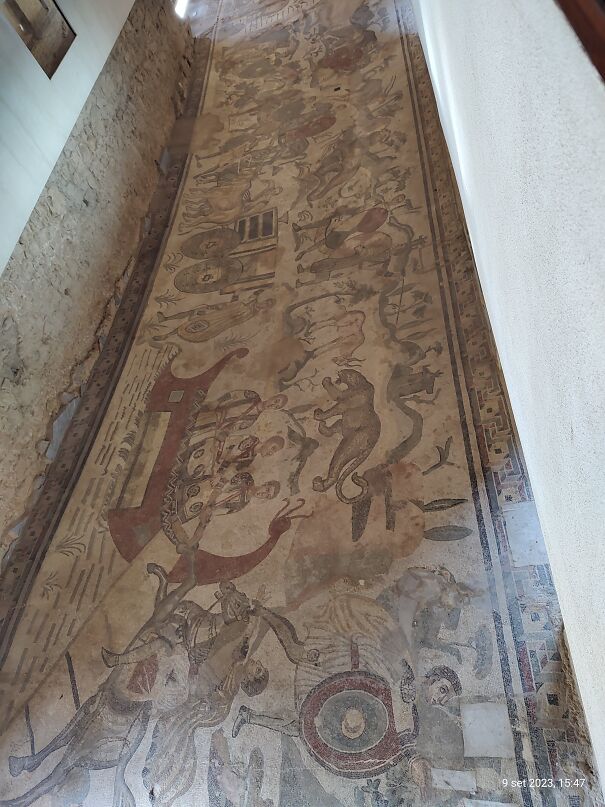
The Guinigi Tower - A 45-Metre-Tall Fortified Tower-House Built In The 1300s, With Holm Oak Trees Growing In Hanging Gardens At Its Top. Lucca, Italy
Not sure how this is an archaeological find - was it invisible for a couple of hundred years or what?
A Massive Floor Mosaic From The Bath Of The Seven Wise Men At Ostia Antica. Made Around 1,800 Years Ago, It Depicts An Elaborate Black And White Hunting Scene
Persian Achaemenid Rhyton (Drinking Vessel Or Vessel For Pouring Libations) Made Of Lapis Lazuli And Gold. 6th-5th Century Bce. Abegg Foundation, Riggisberg, Switzerland (6.7.63)
Persian Achaemenid rhyton (drinking vessel or vessel for pouring libations) made of lapis lazuli and gold. 6th-5th century BCE. Abegg Foundation, Riggisberg, Switzerland (6.7.63)
Lapis is one of my favorite things. It cuts beautifully. Now I miss my lapidary and silver smithing days.
House Of Neptun And Amphitrite. Herculaneum, Italy
When Vesuvius erupted in AD 79, it buried not only the city of Pompeii, but a number of other nearby towns as well. One of them was Herculaneum. Among the many houses in Herculaneum is a relatively small, but richly decorated town house, called the House of the Neptune Mosaic, which must have belonged to a wealthy family
If ever you are in the bay of Naples area, go check out Herculaneum, I went a few years back,fascinating place,and less busier than Pompeii.
Mycenaean Daggers, Made Of Silver And Gold. Found In Shaft Graves 4-7 In Grave Circle A, 1550-1500 B.c
The Discovery Of The Ancient Statue Of Antinous Found In Delphi, Greece During An Excavation In 1894
A 3rd Century Ce Roman Horse Armour, Made Up Of About 2000 Bronze Scales
Found in Dura-Europos, Syria, and is now housed at the National Museum of Damascus. The bottom picture shows the armour shortly after it was discovered in 1932
The 1800-year-old statue of a water nymph found in Amasra (Turkiye) on the Black Sea.
A Fortuitously Placed Fossil. A 320 Million Year Old Goniatite Fossil, County Clare, Ireland
Roman Mosaic At Entrance To House Of Tragic Poet In Ruins Of Pompeii, Which Was Destroyed In 79 Ad.
Mosaic is approximately 2000 years old and depicts a chained dog with caption "cave canem," which means "beware of the dog."
The 'Trier Gold Hoard' Was The Largest Roman Gold Hoard Ever Discovered
Comprising of 2,500 gold coins weighing 18.5 kg , the discovery was made during excavation works in 1993, nearly 1,800 years after it was hidden.
The discovery of the Gold Hoard in Trier in 1993 caused quite a sensation. Greater inspection revealed that it was not simply someone's personal fortune but most likely an official treasury. The treasury had been carefully administered and had grown over time. The Hoard equated to the annual salary of around 130 Roman soldiers. The aurei (gold coins) feature a total of 27 emperors, empresses and members of the imperial family, and some are still considered unique to this day.
Ancient Tunnel Under The Great Pyramid Of Cholula
A 1st Century Ad Head Of A Cyclops From The Roman Colosseum
Finding The Foot Of The Roman Emperor Marcus Aurelius Statue In Sagalassos Ancient City In Ağlasun, Burdur
Sea Shell With Carved Head At The Apex (Probably Phoenician, 600 Bc)
The Phoenicians were the first people to wear purple clothing. Purple dye didn't exist before they produced it from molluscs.
A Series Of 11th-Century Crystal Chess Pieces From The Museo Da Catedral In Ourense, Spain
Ancient Roman Glass Bottles
Fascinating that they are so well preserved after so many years. My spouse and I each broke a glass over the past two week. These beautiful pieces would never have lasted in our house, and posterity would be that much poorer . . . .
Treasure Recovered From The Wreck Of Theydah Gally
The only fully authenticated Golden Age pirate shipwreck ever discovered. The ship sank in 1717 killing nearly all of its 150-person crew, including its captain Bellamy.
Gold Bull’s Head Bowl Known As “Attila’s Cup”, Part Of The Nagyszentmiklós Treasure Uncovered In Hungary, Dates To The 6th Century Ad
Stunning Gold Medallion With The Portrait Of Alexander The Great
This Medallion was discovered in Egypt as part of a hoard that comprised about twenty similar medallions (now dispersed among various museums), eighteen gold ingots, and six hundred gold coins issued by Roman emperors from Severus Alexander to Constantius I. One of the medallions, now in the Calouste Gulbenkian Museum in Lisbon, bears an inscription that possibly reads "Olympic games of the year 274", a date corresponding to 242-243 CE. It is possible that the medallions were intended as prizes to be given out at that event. Alternatively, they may have been issued by Emperor Caracalla who is potrayed on some of them. Caracalla liked to be compared to the great king and conquerror Alexander of Macedon. Like Alexander, this Roman emperor waged war in the East, and actually died in the course of his campaign against the Parthians. This particular medallion shows Alexander the Great gazing heavenward and bearing a shield decorated with signs of the zodiac. This portrait shows him with his hair pulled back. He wears a decorated cuirass with a figure of Athena on the shoulder strap and, on the chest, a scene from the Gigantomachy (War of the Giants). The back depicts Alexander and Nike, goddess of victory, riding in a chariot, flanked by the deities Roma and Mars.
Image property: The Walter Art Museum, Baltimore Maryland.
A Mosaic Floor Of A Villa Dating Back To The 4th Or 5th Century Ad Was Found In Montorio, Verona, Italy
Roman Emperor Philippus The Arab Kneeling In Front Of Persian King Shapur I, Begging For Peace
The standing emperor represents Valerian who was taken captive by the Persian army in 260 AD, The triumph of Shapur I, Naqshe Rostam, Iran.
Note: this post originally had 74 images. It’s been shortened to the top 50 images based on user votes.
